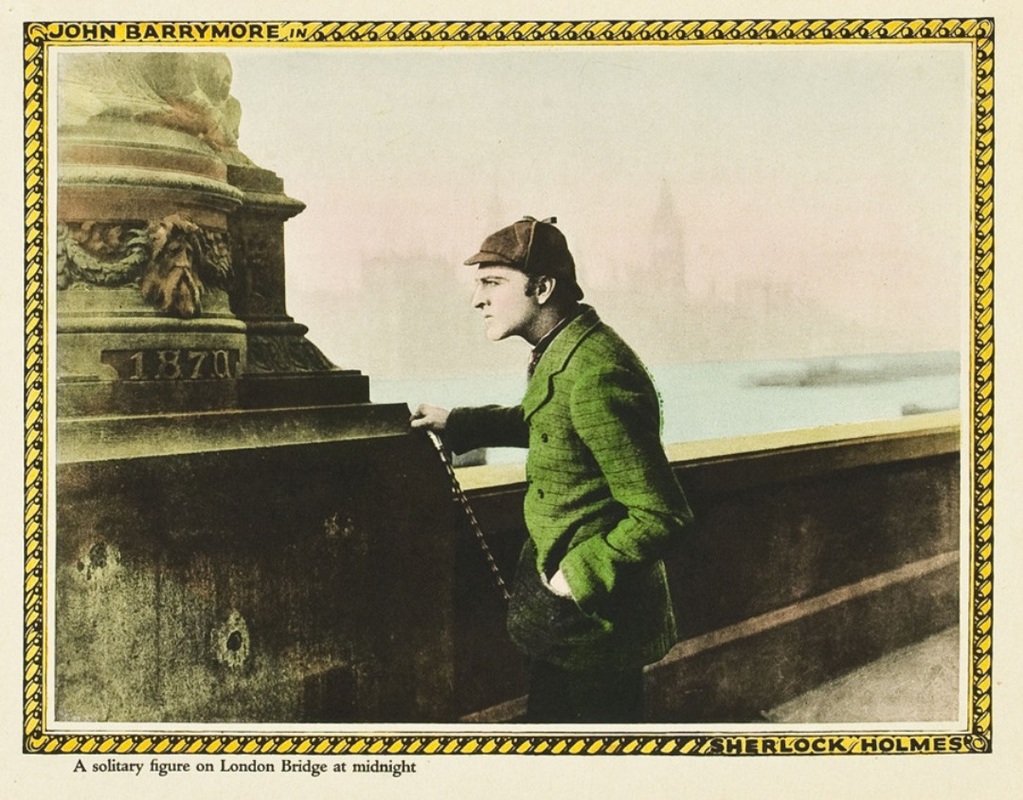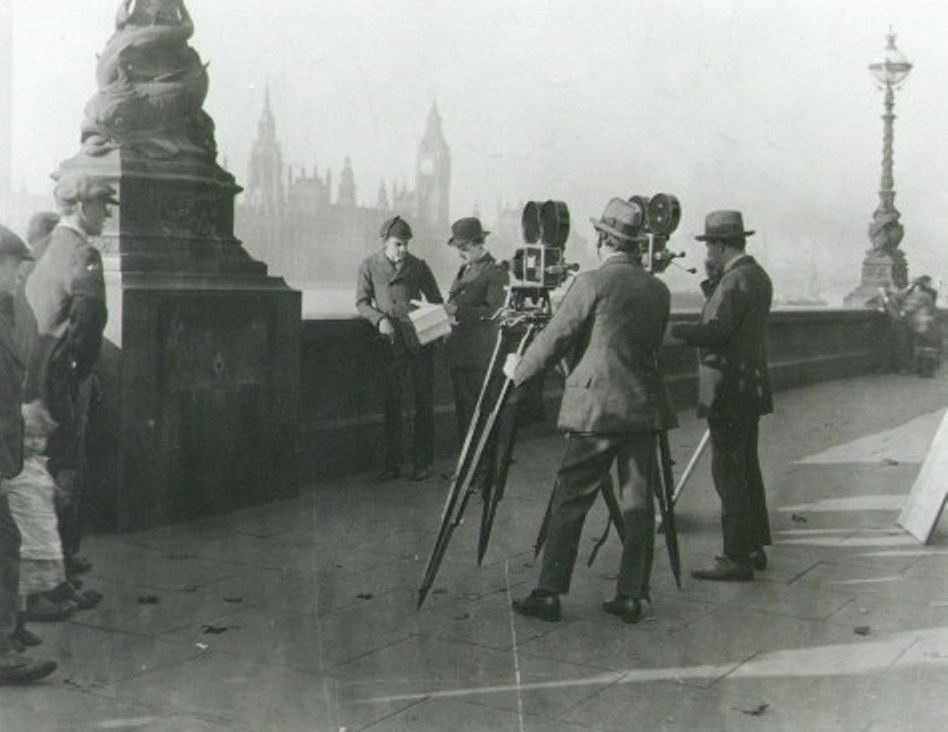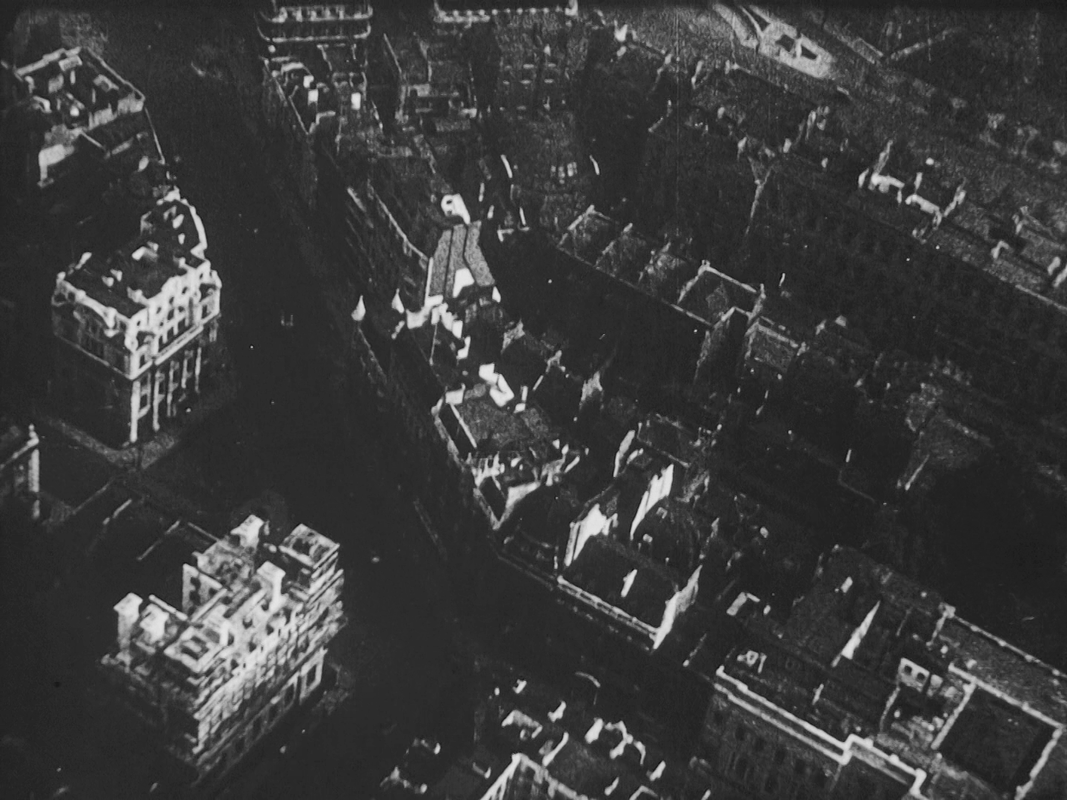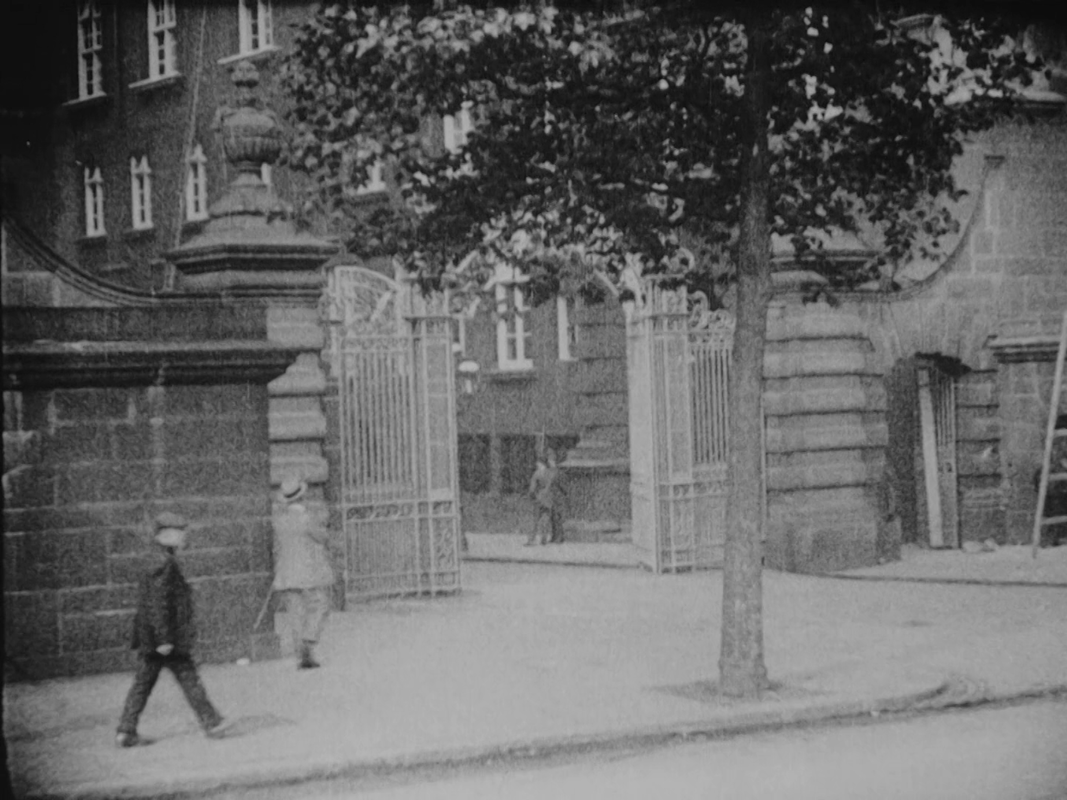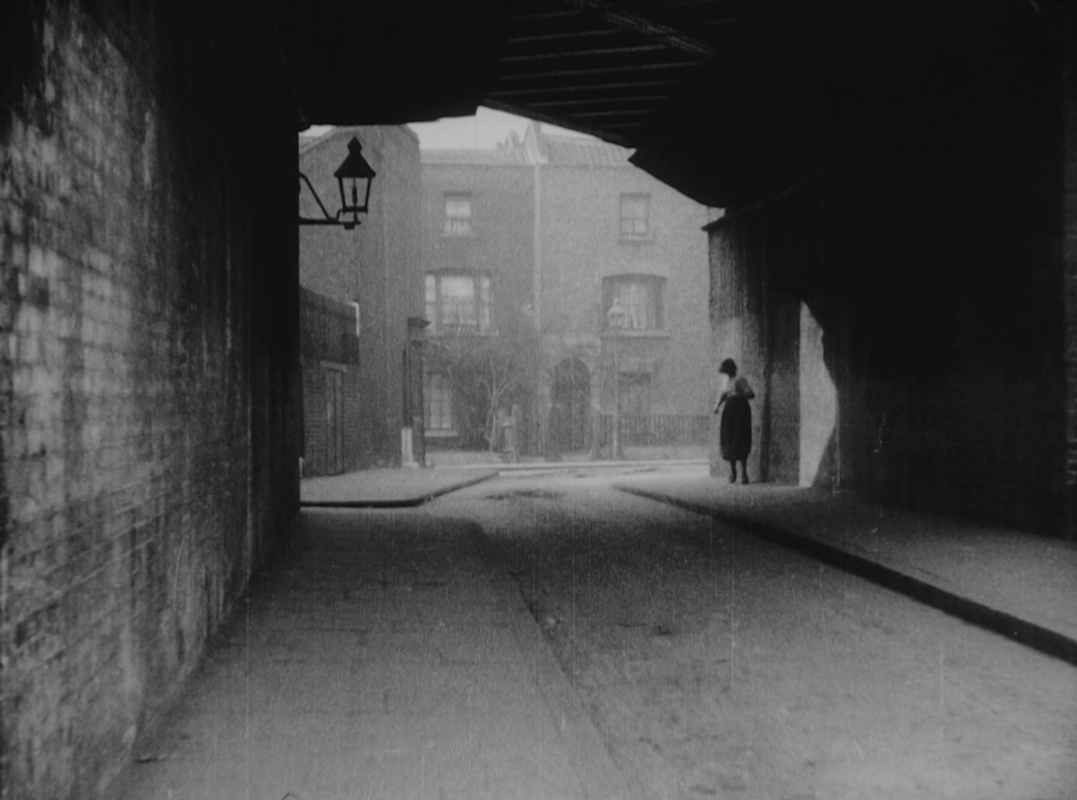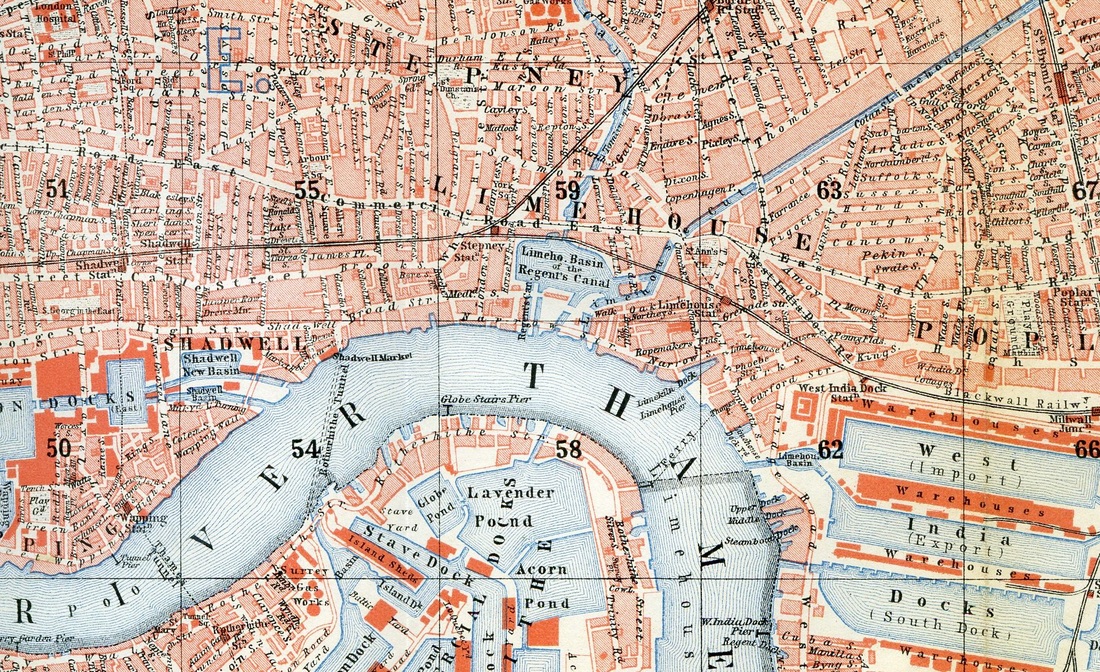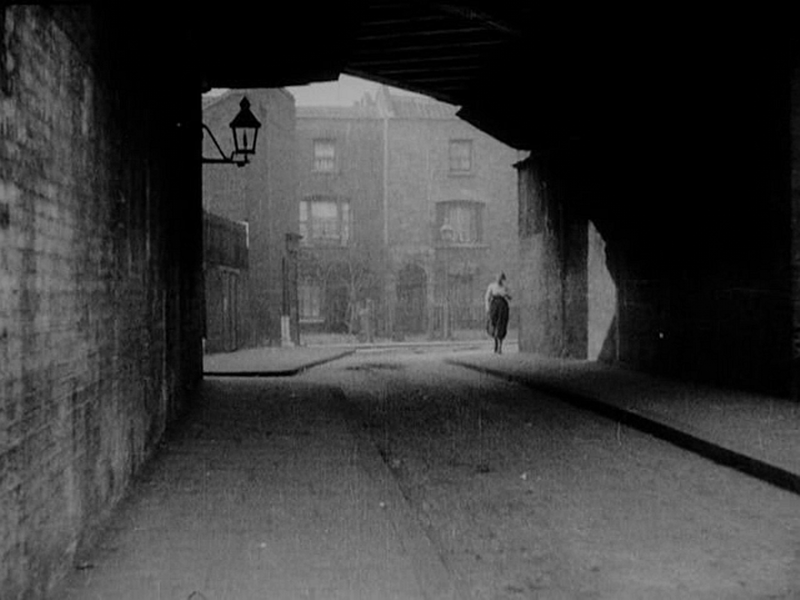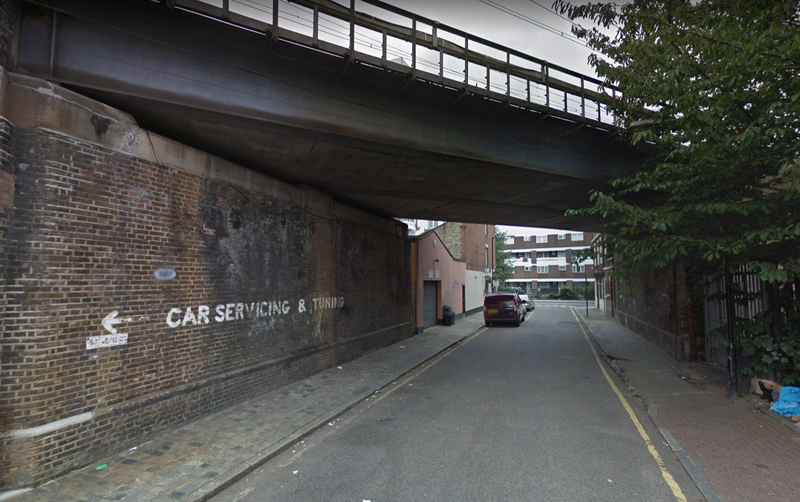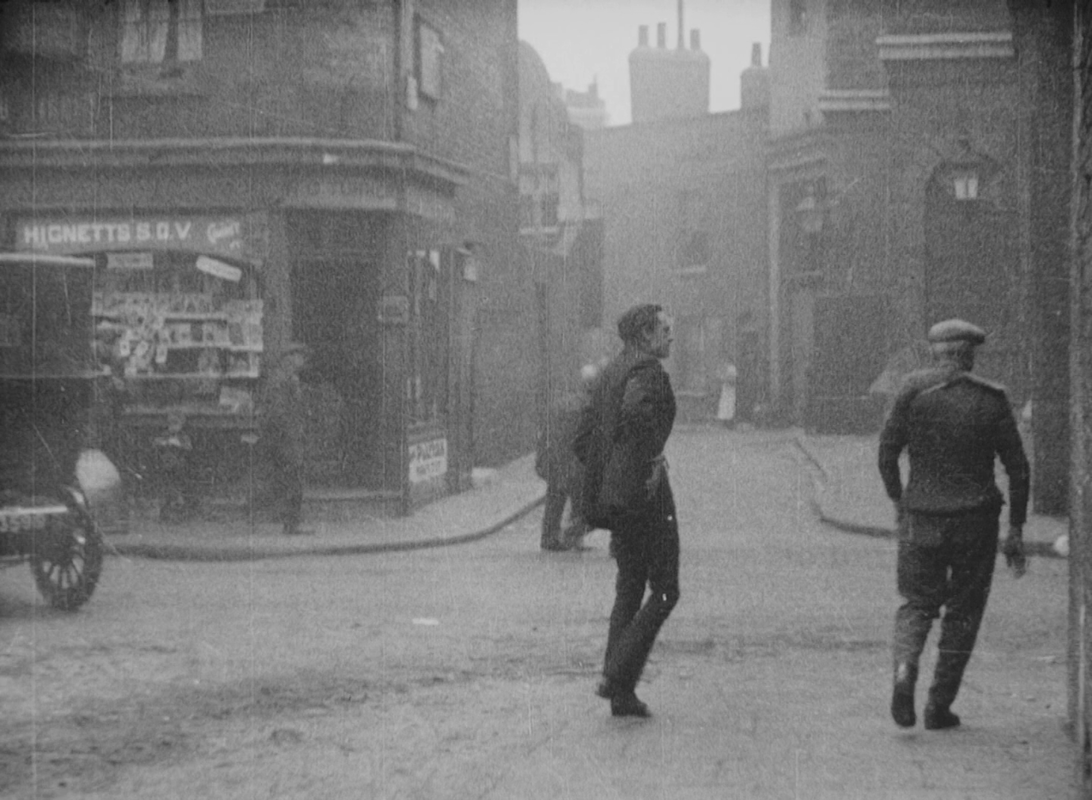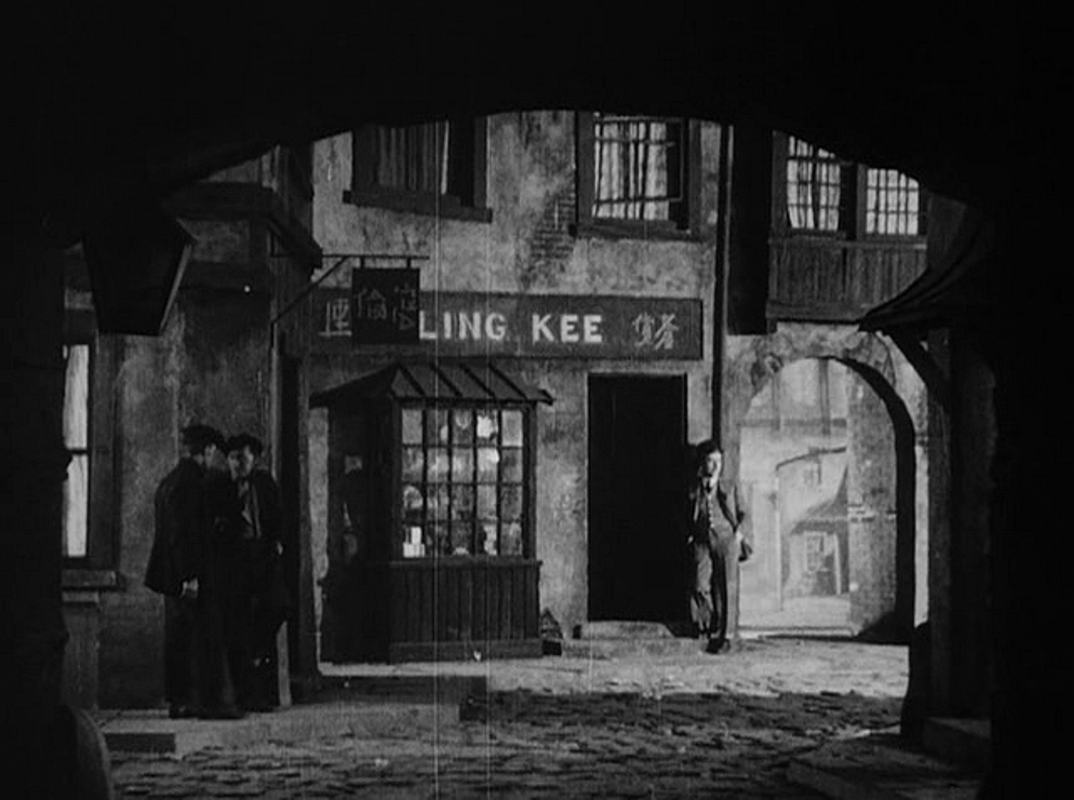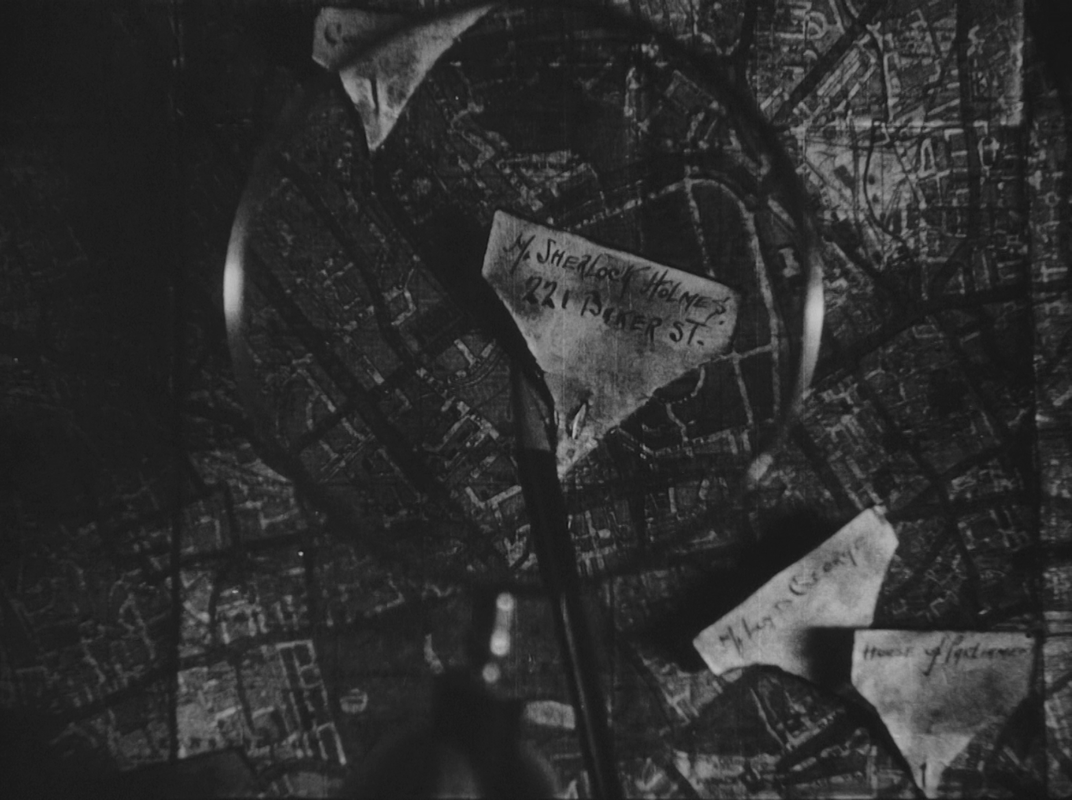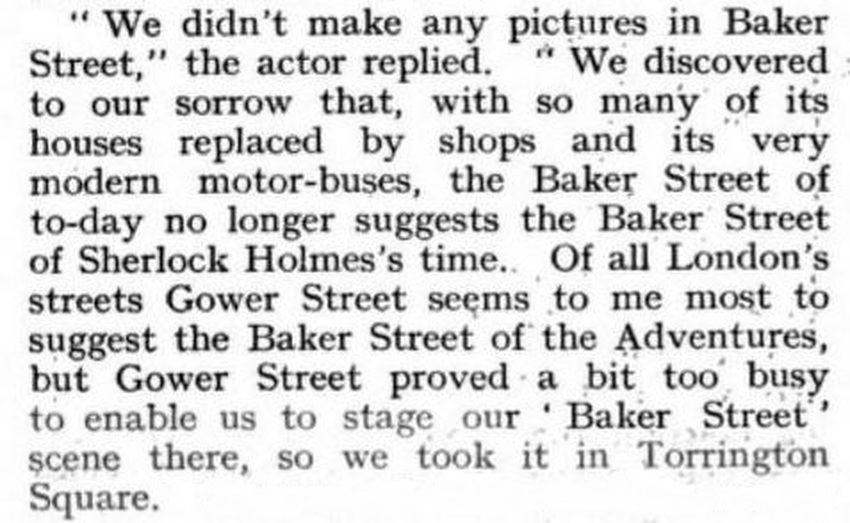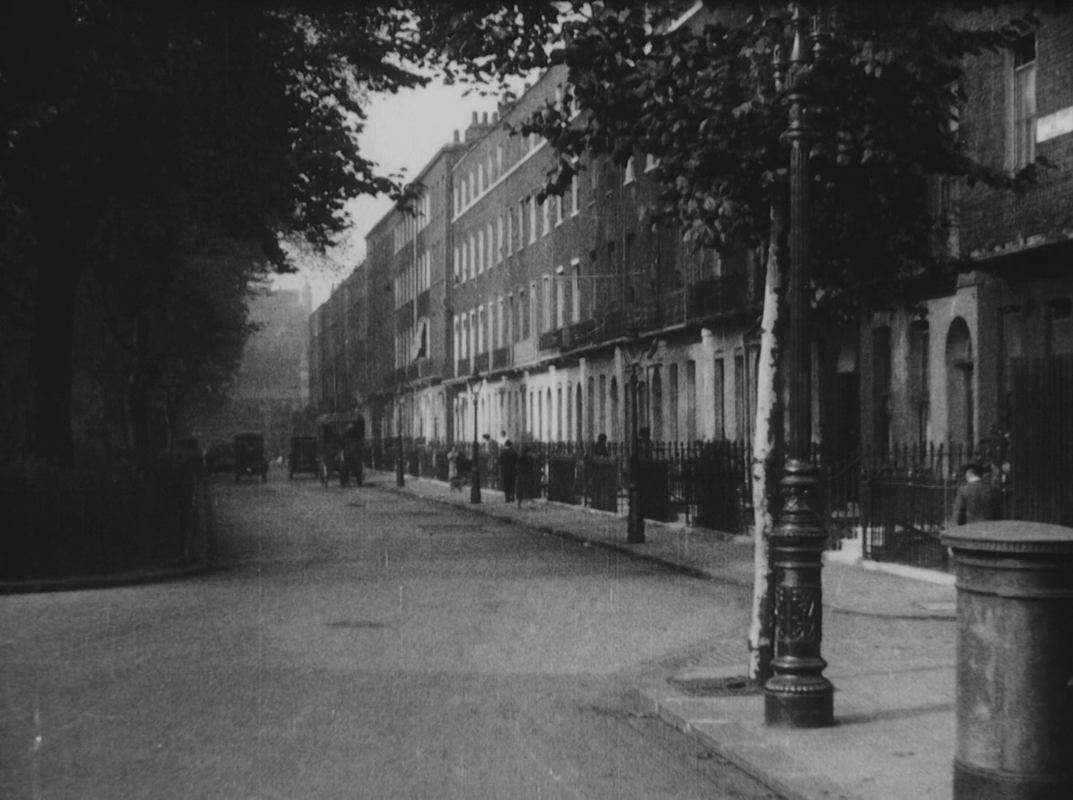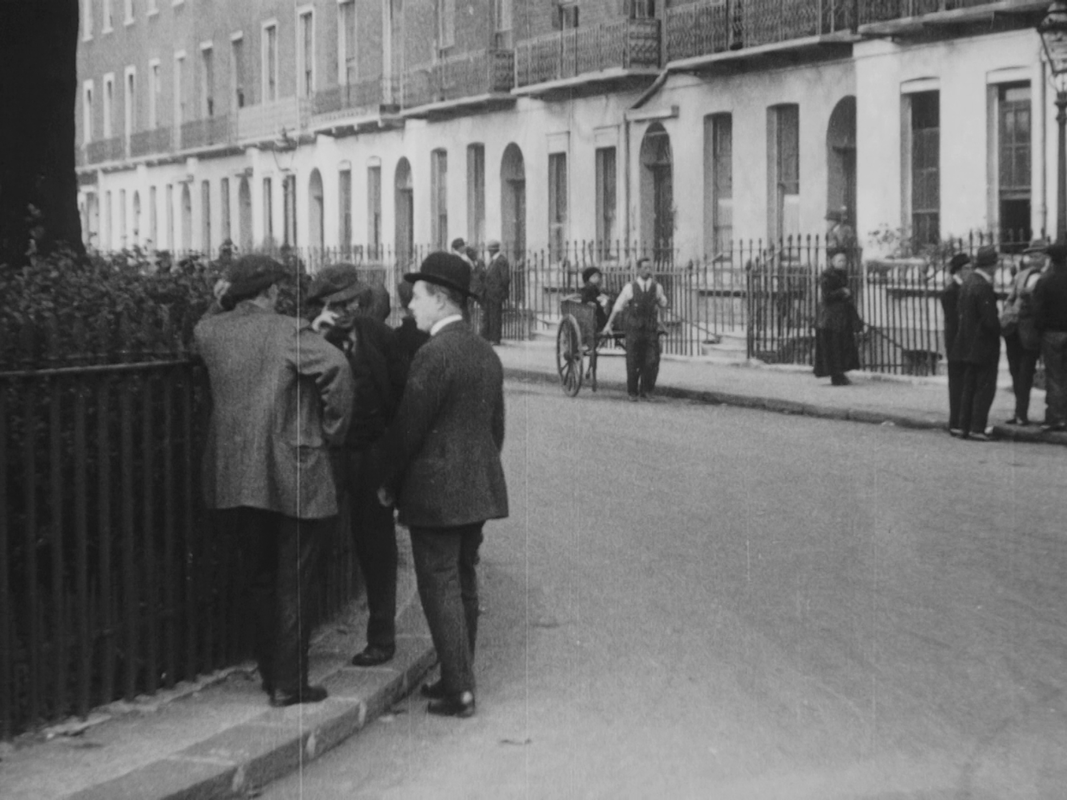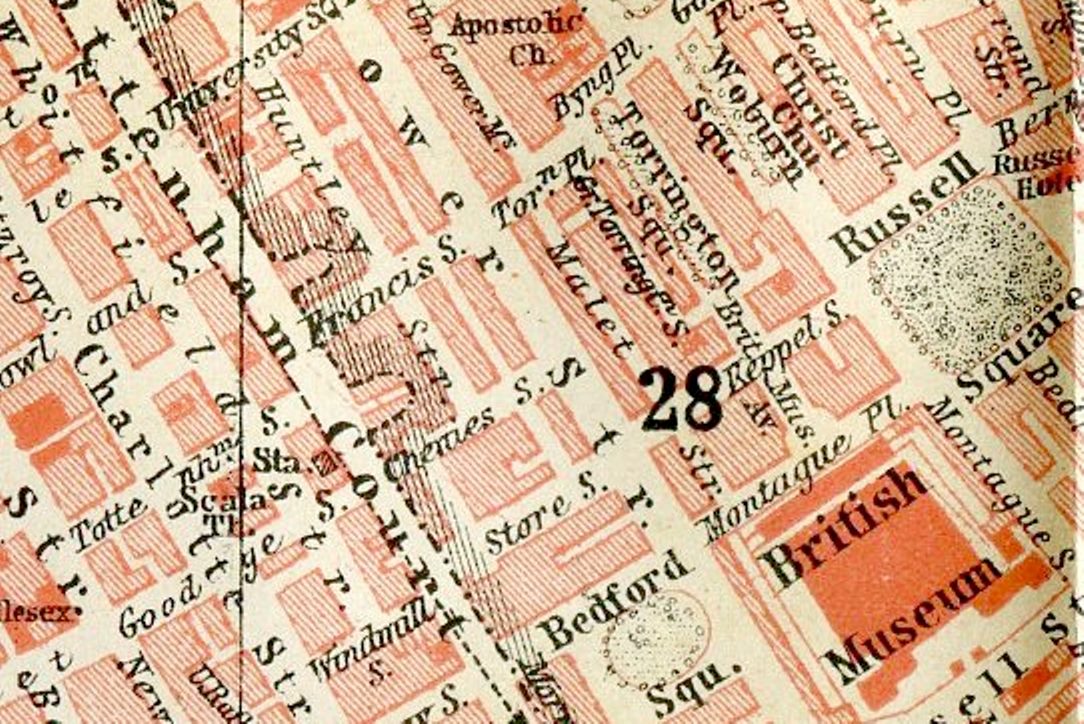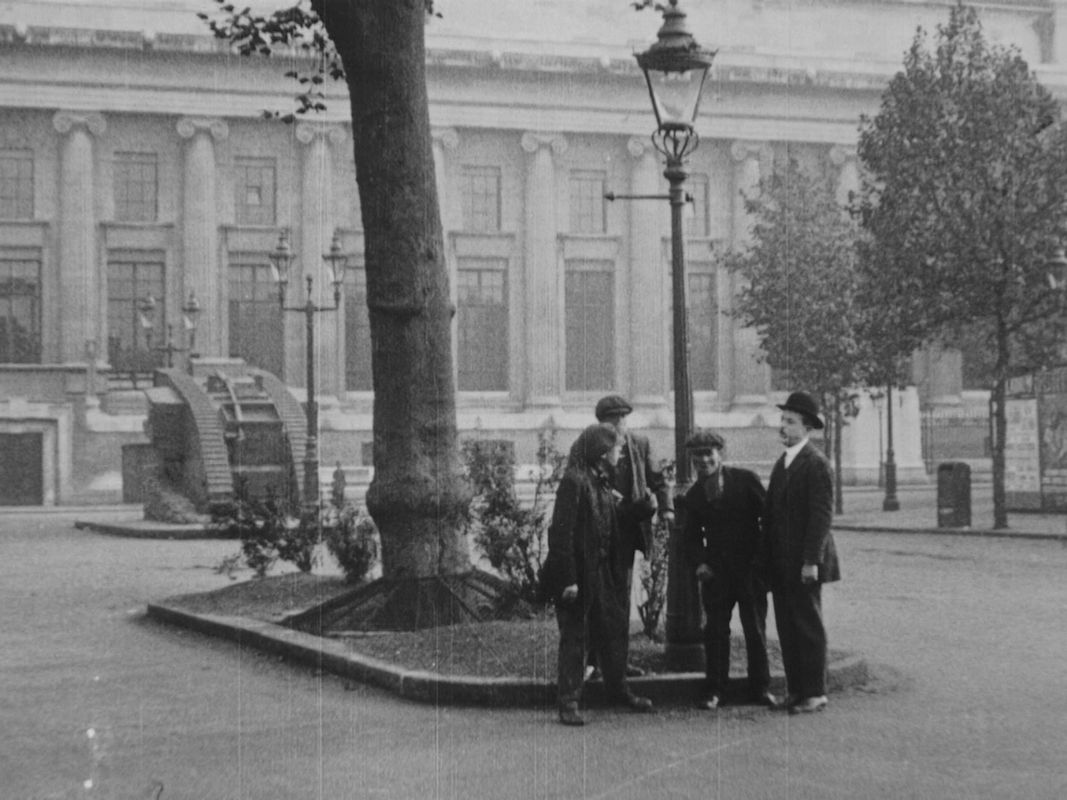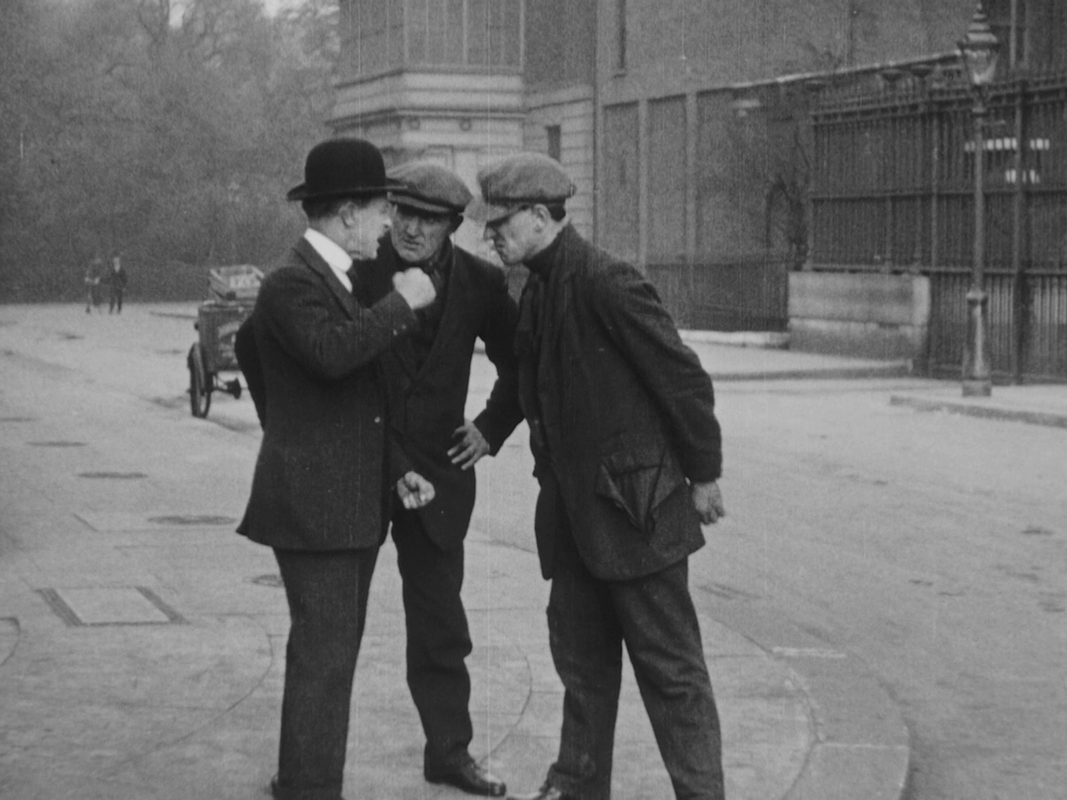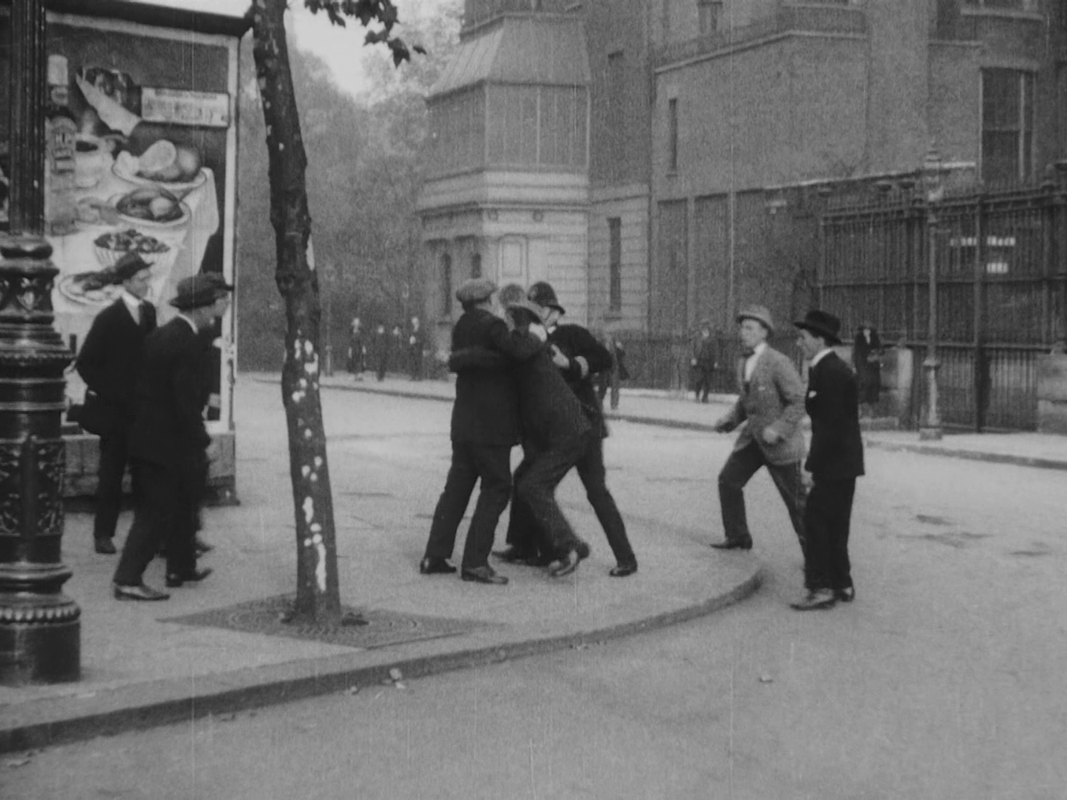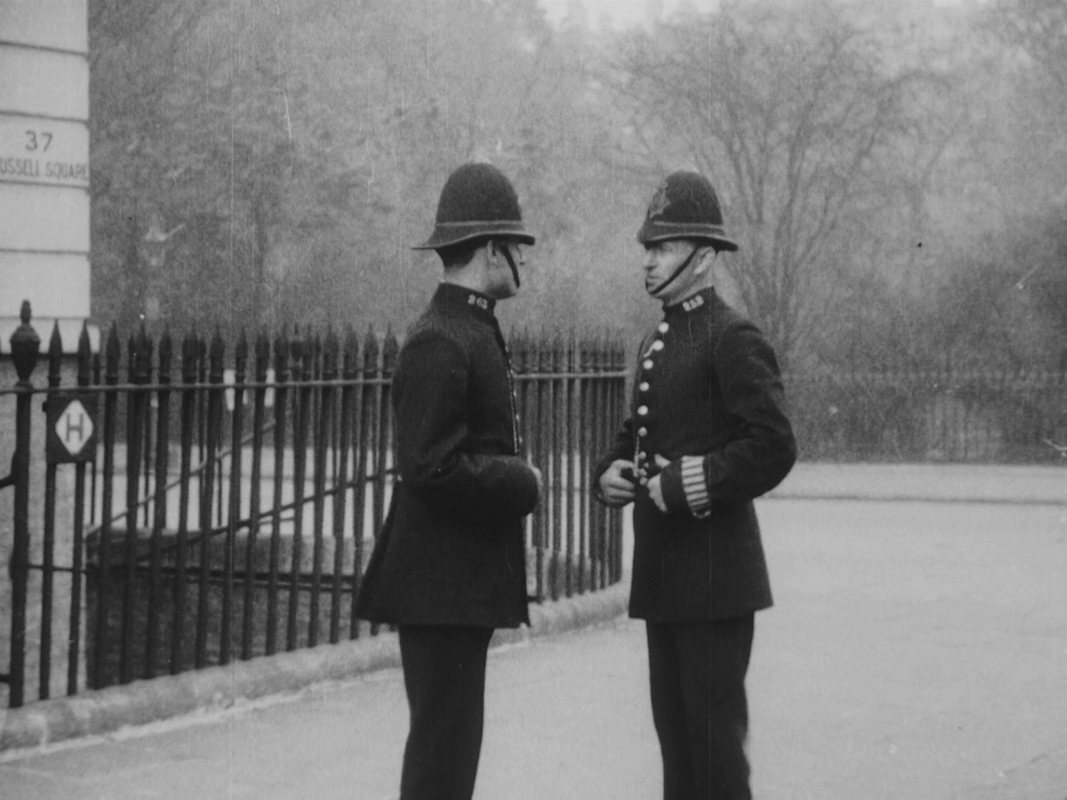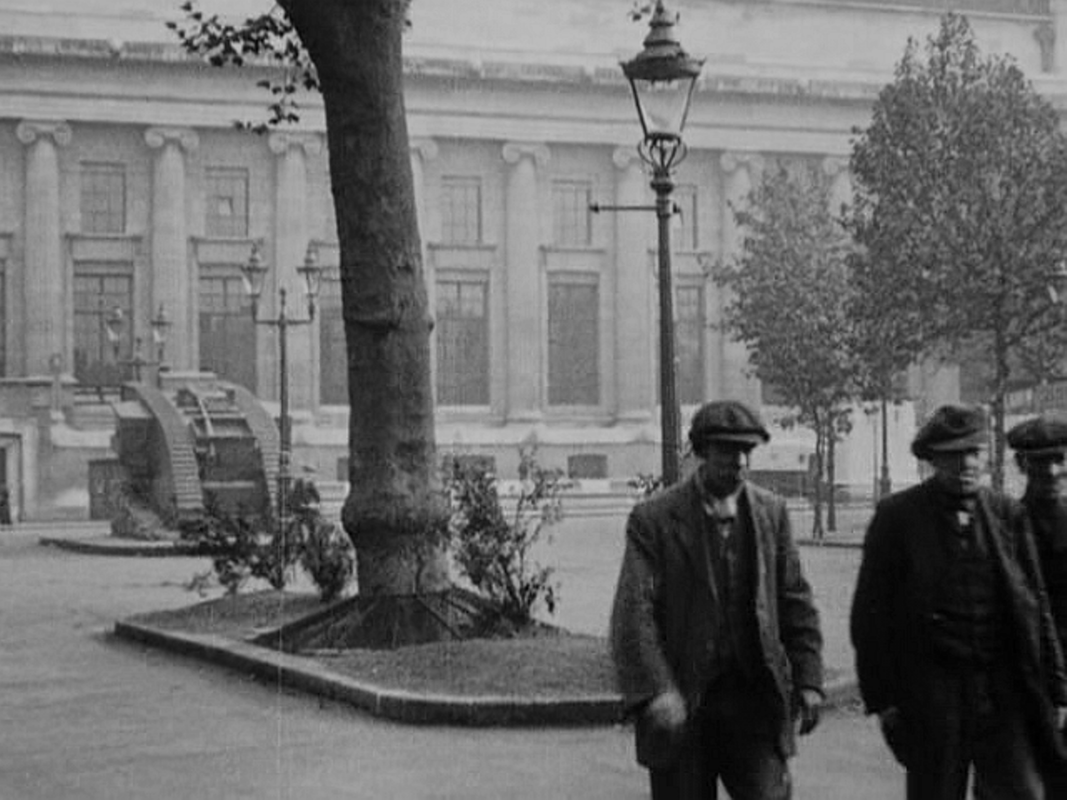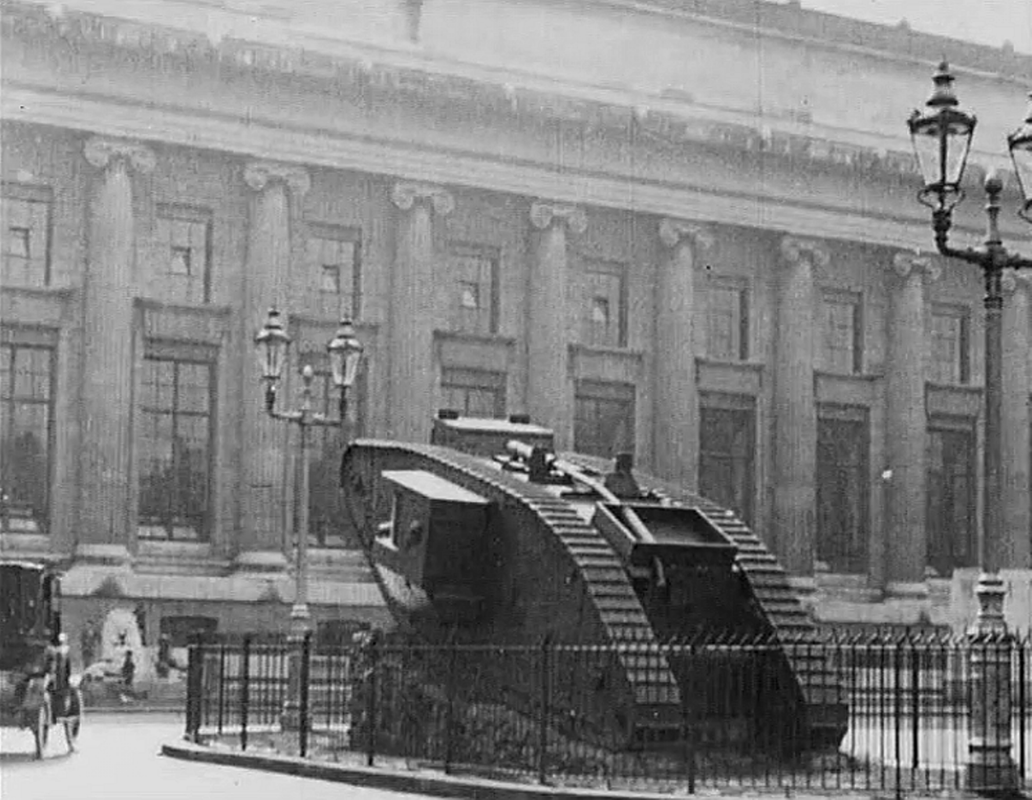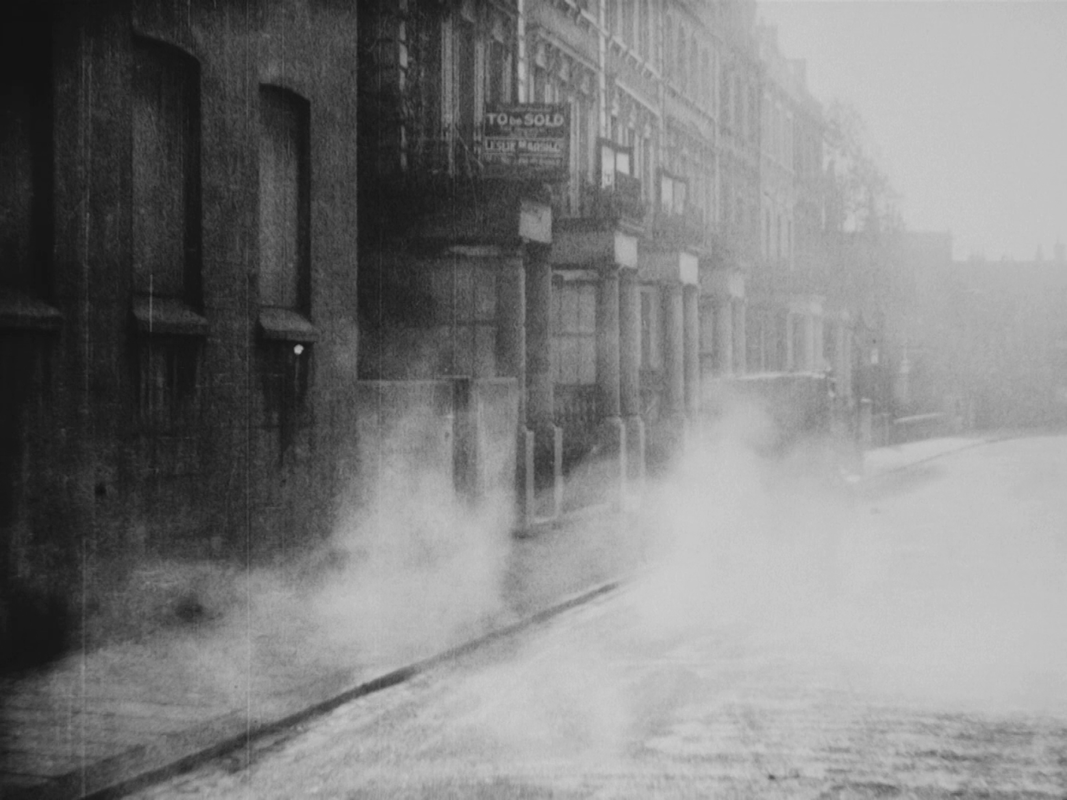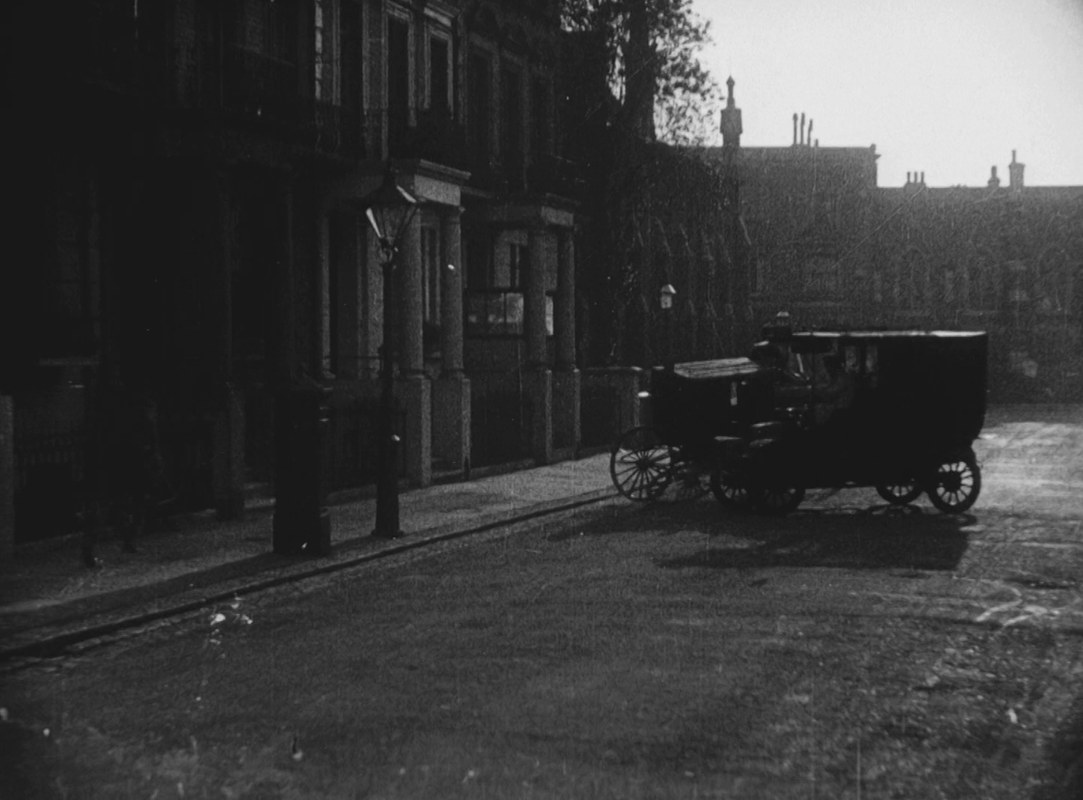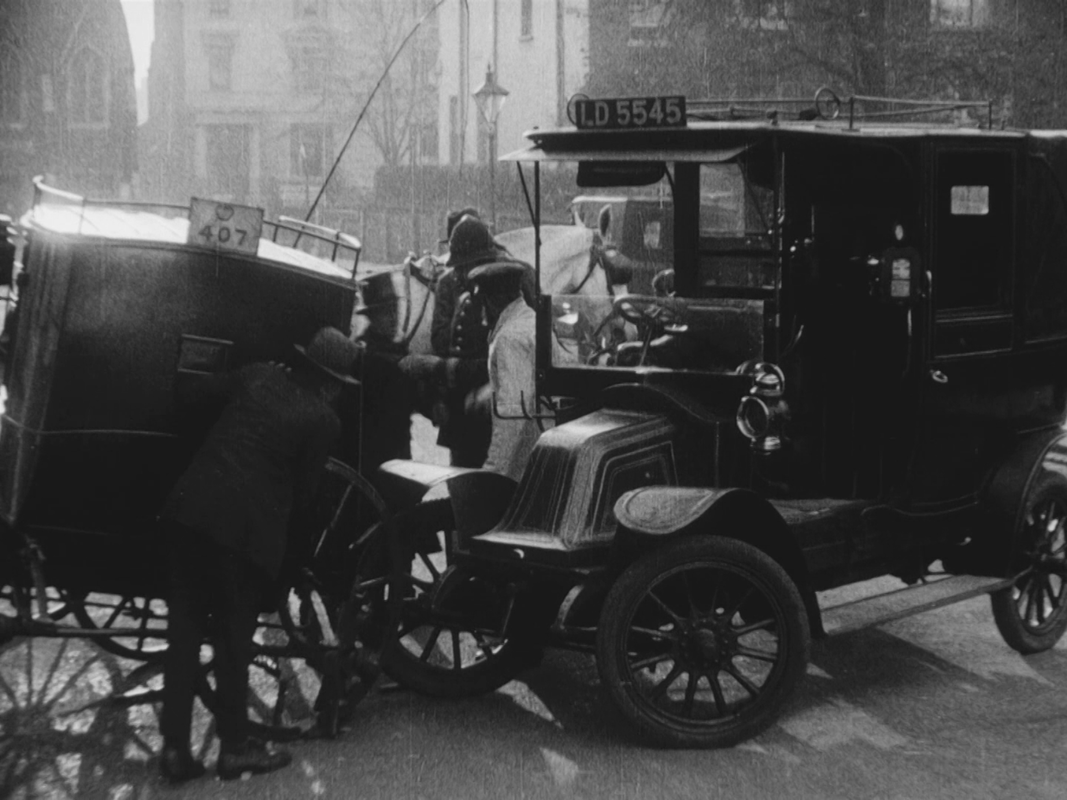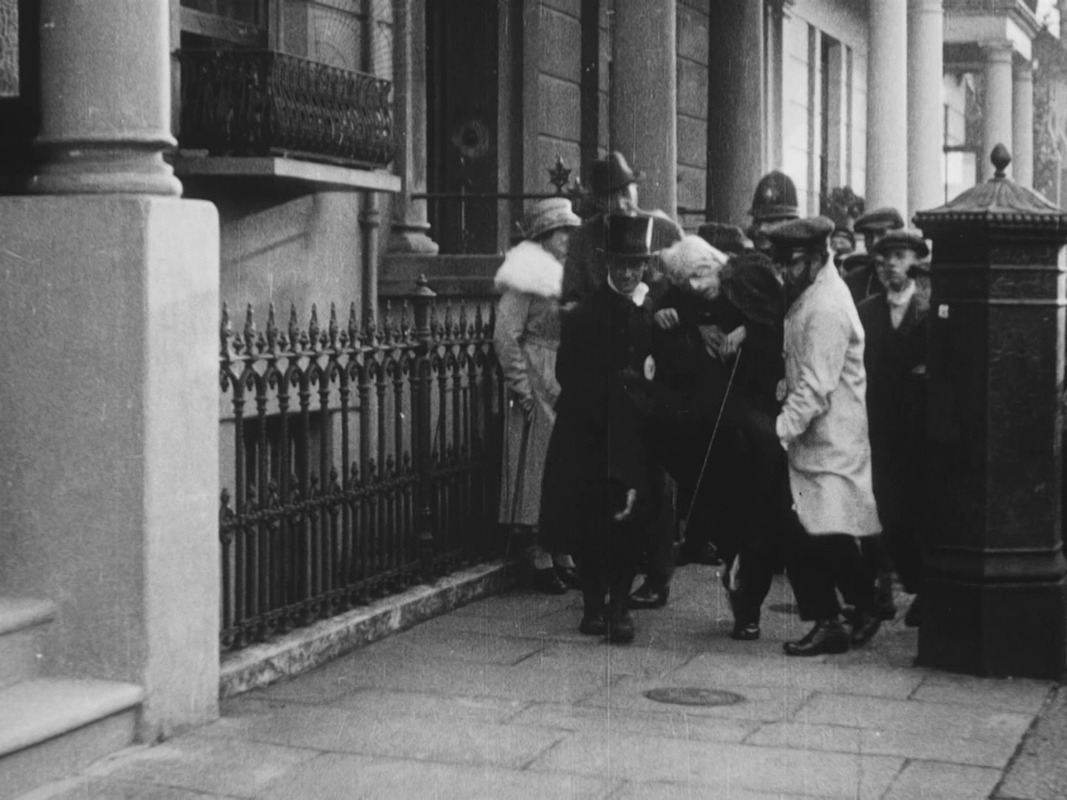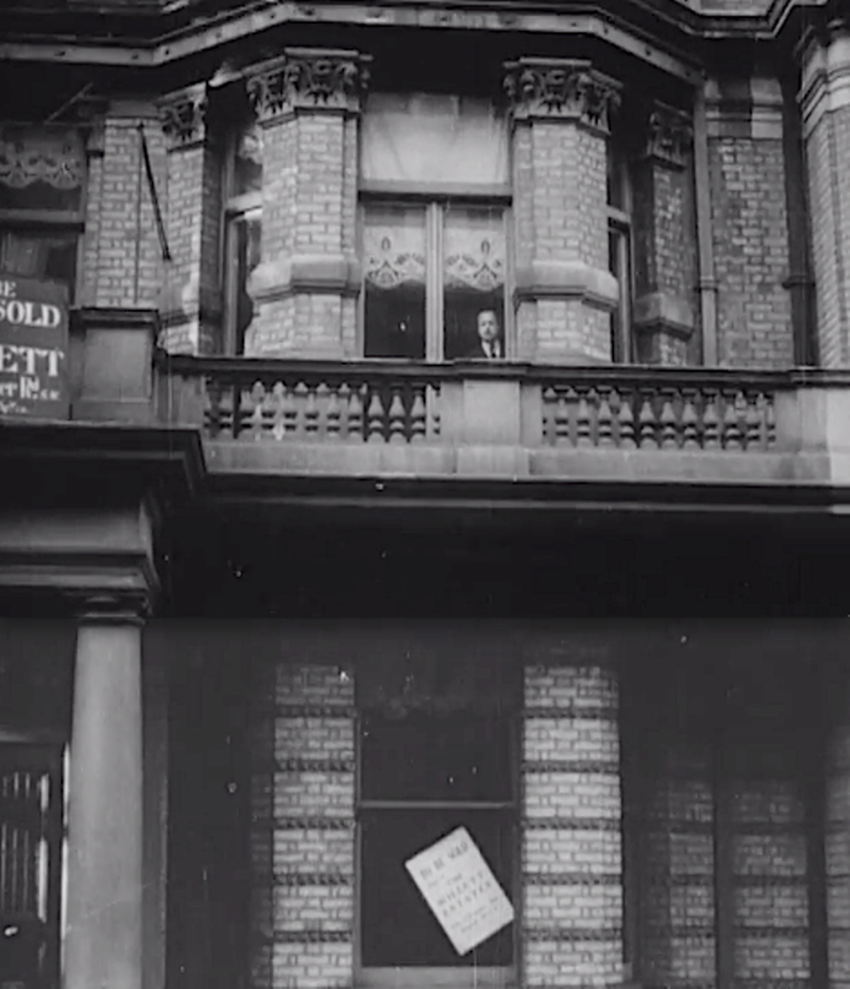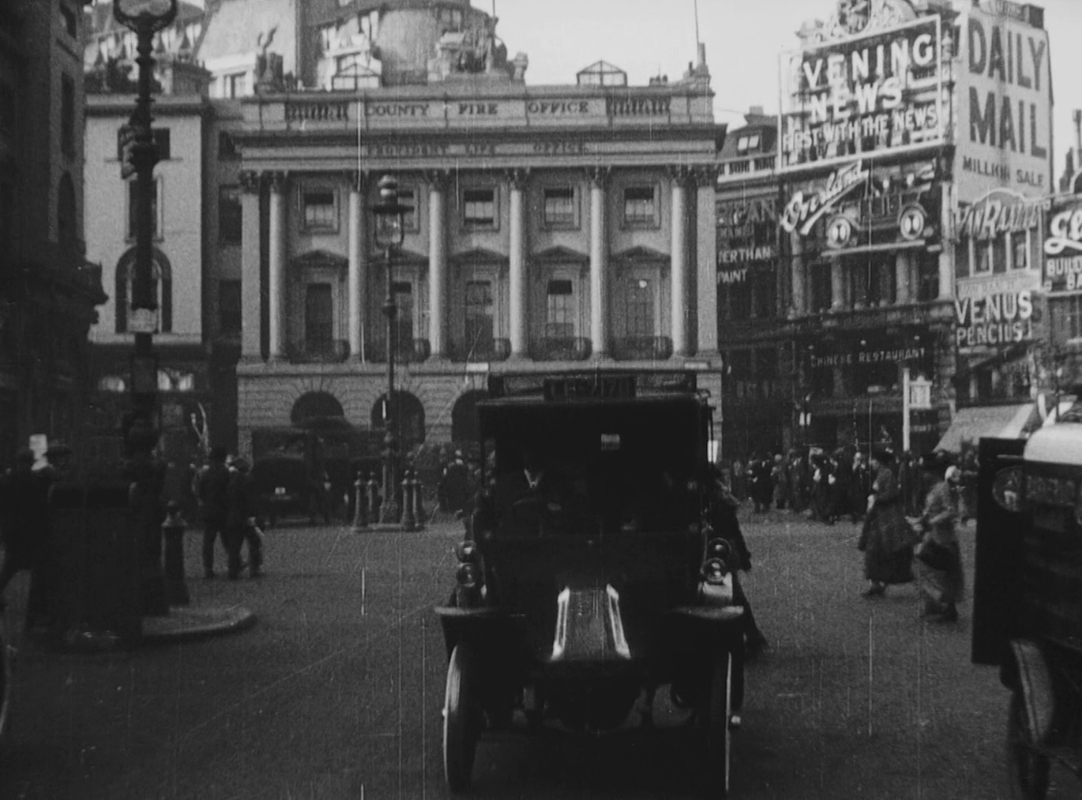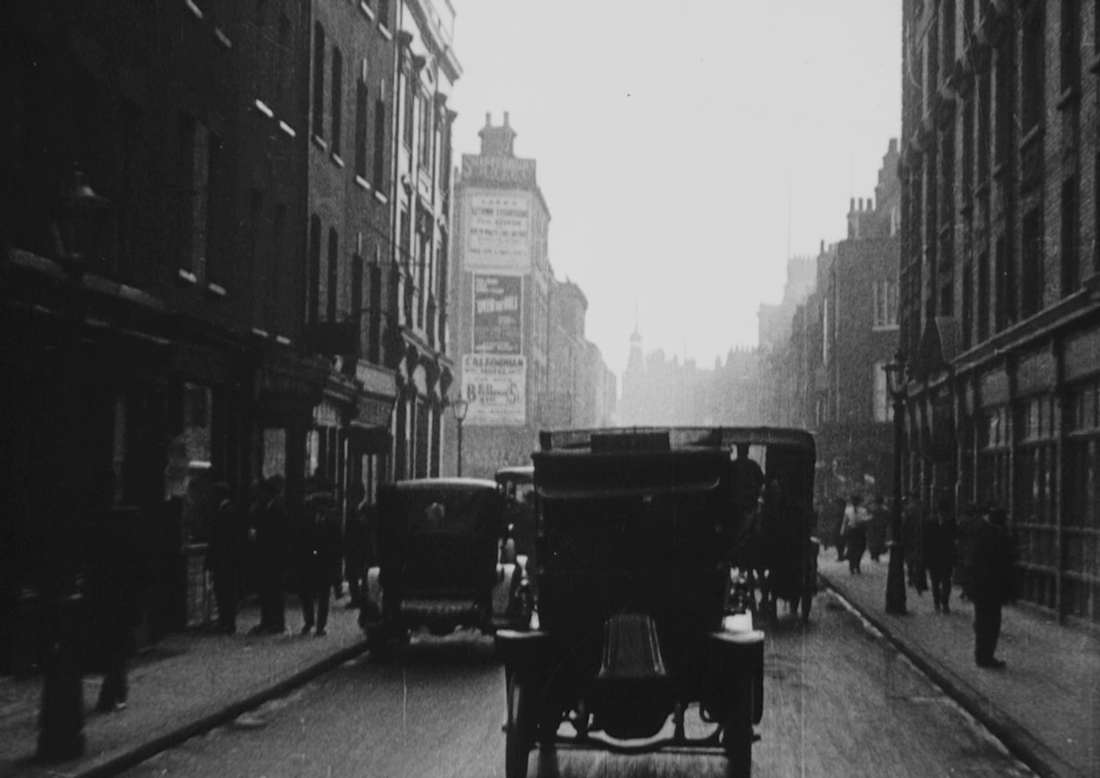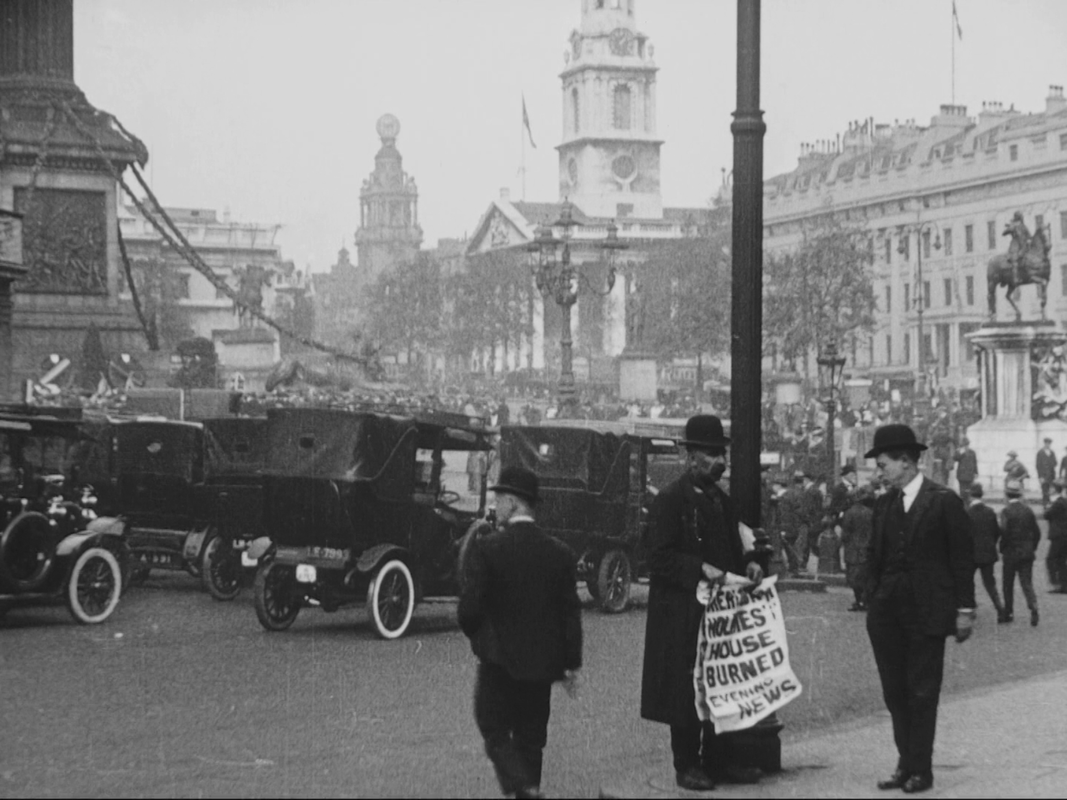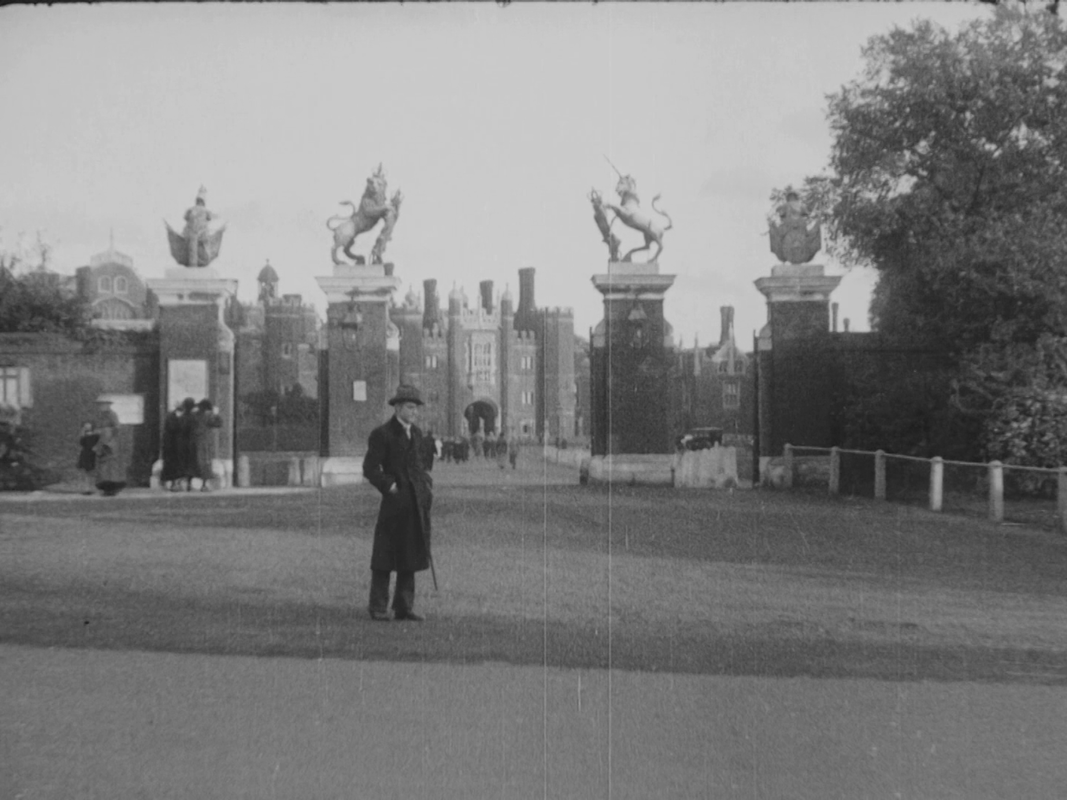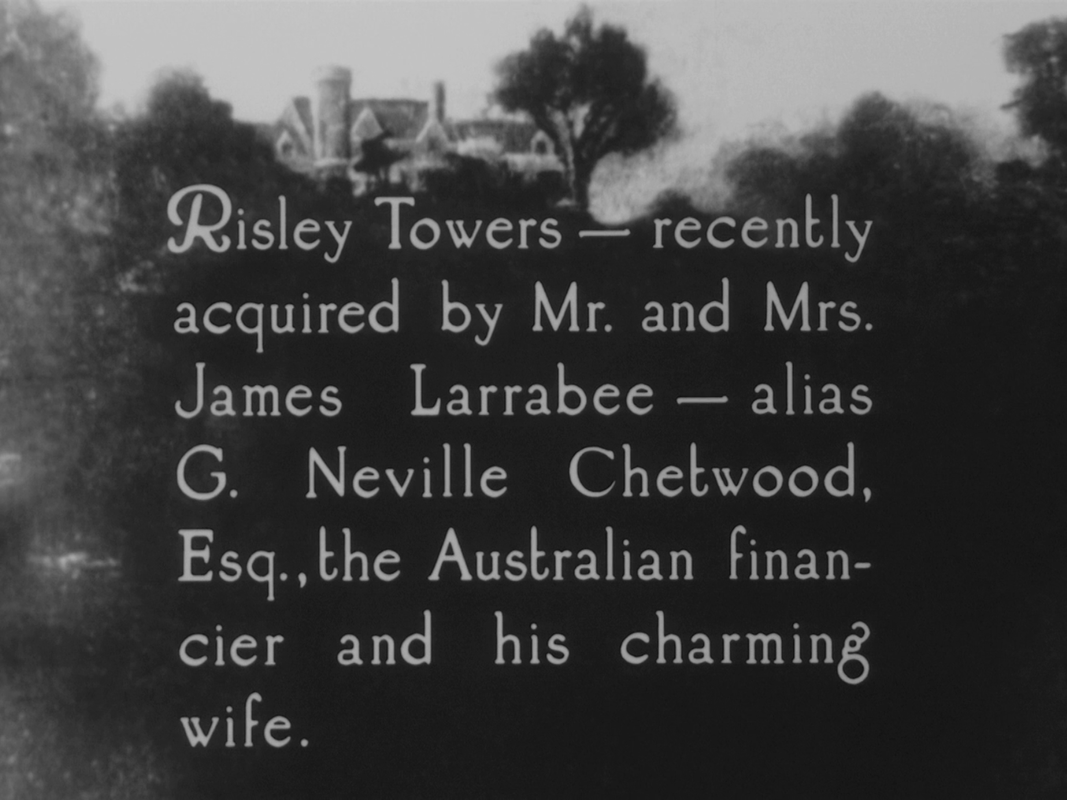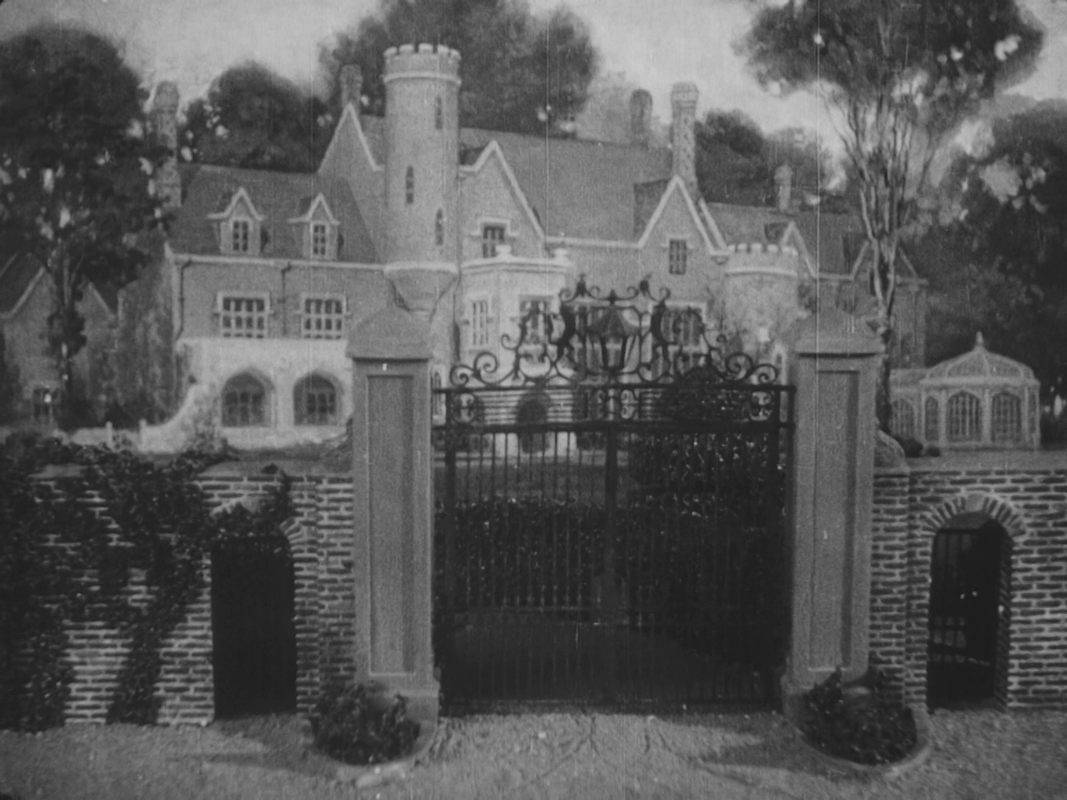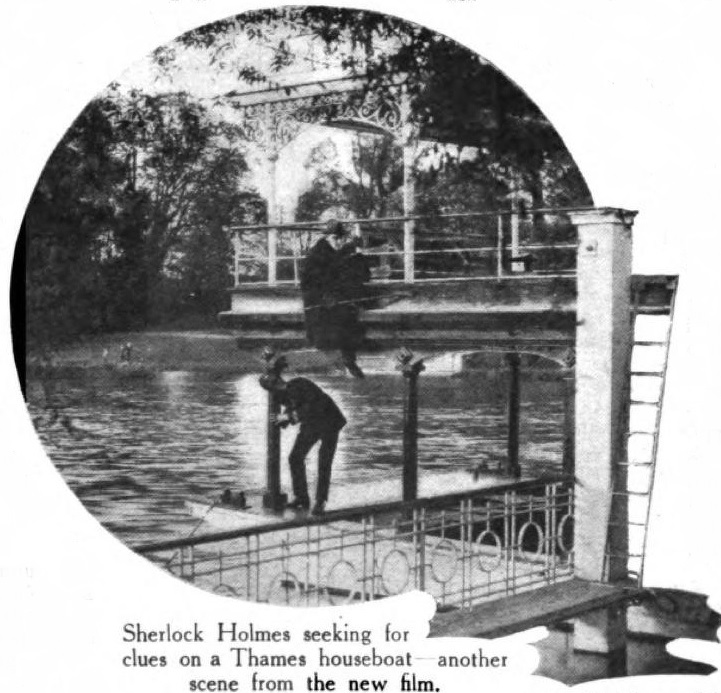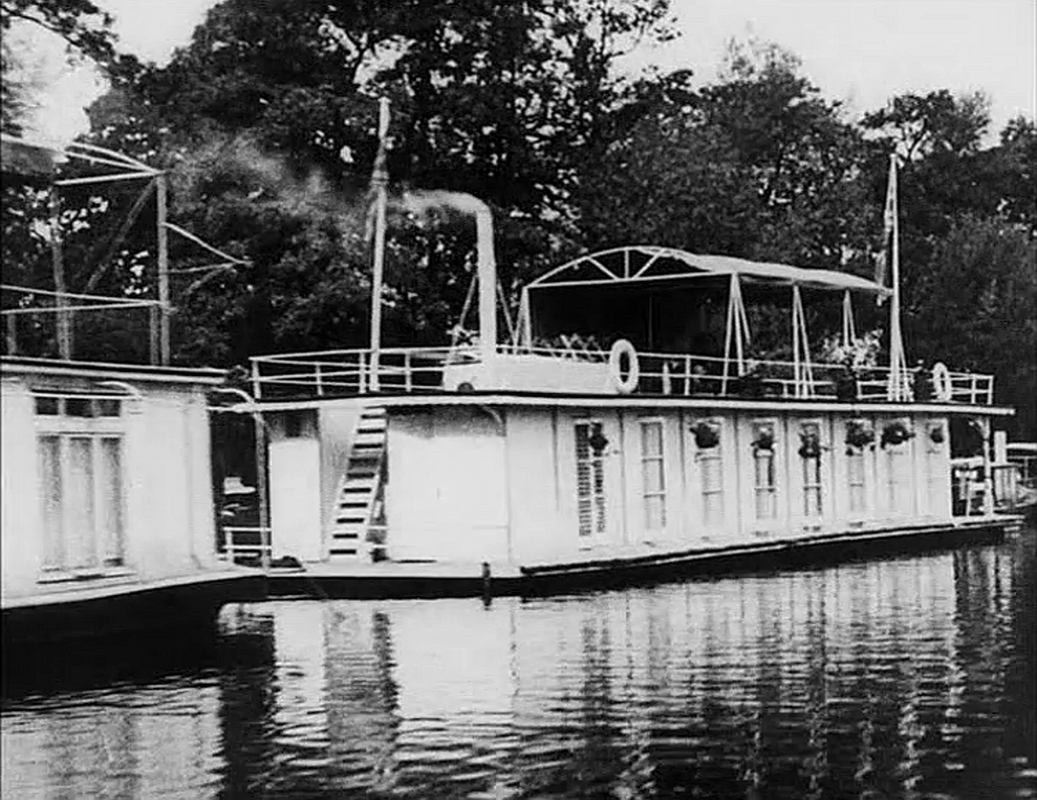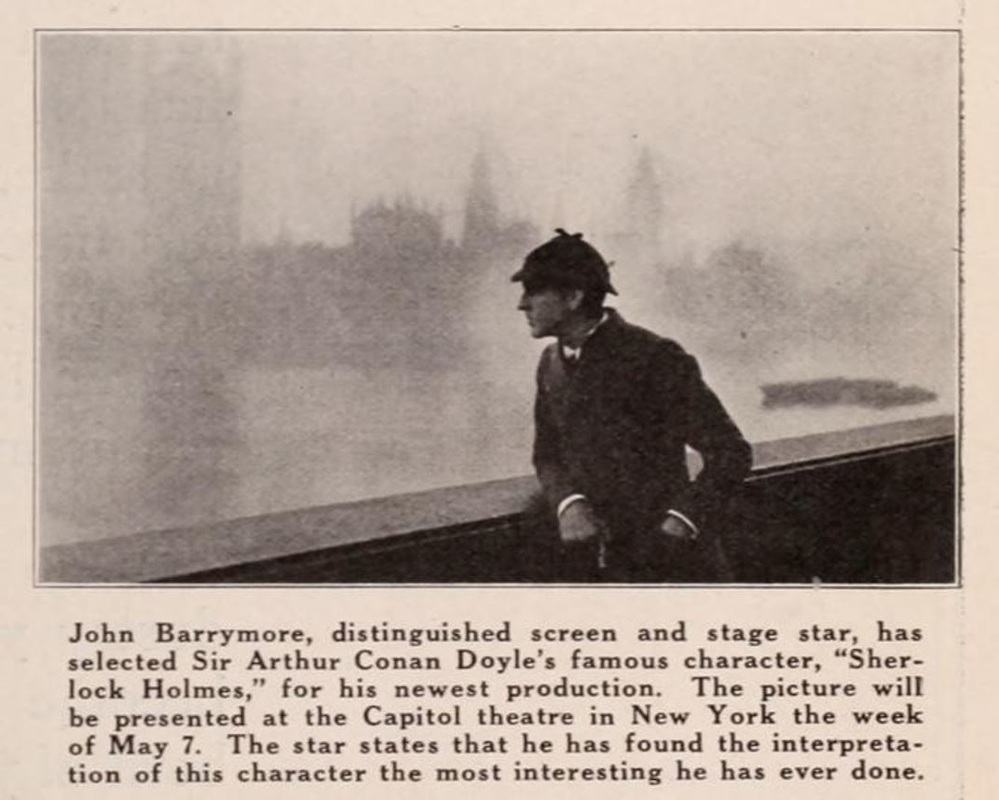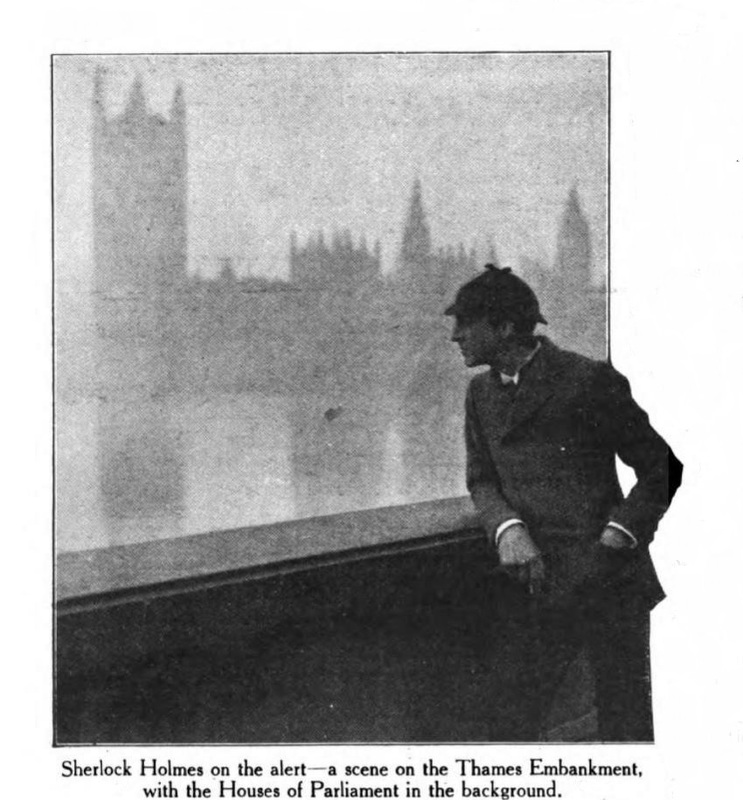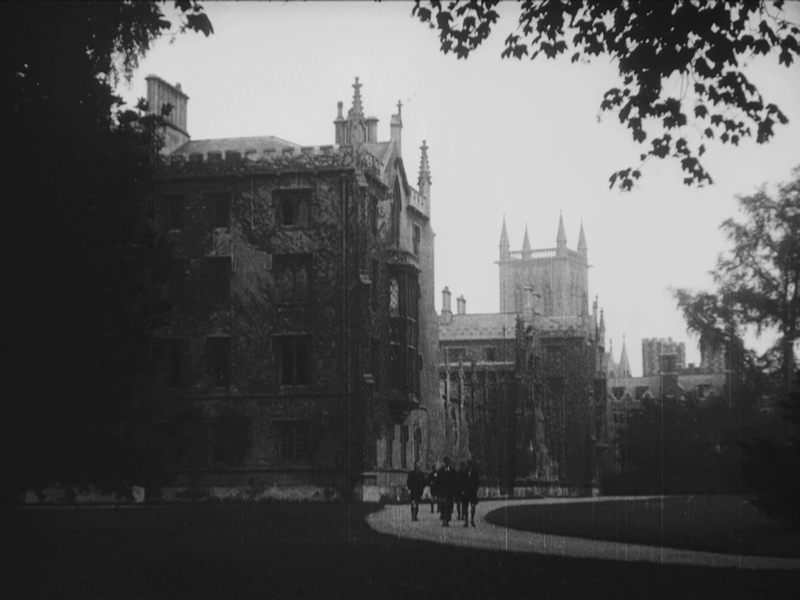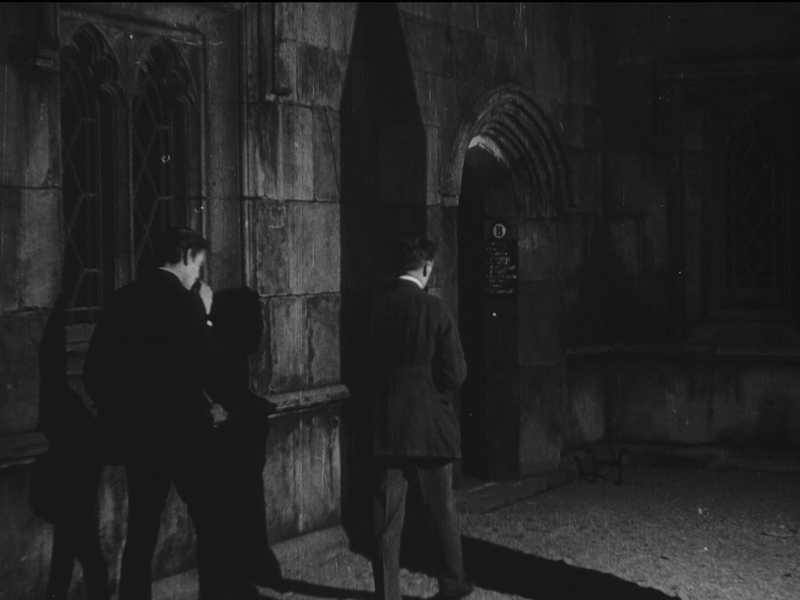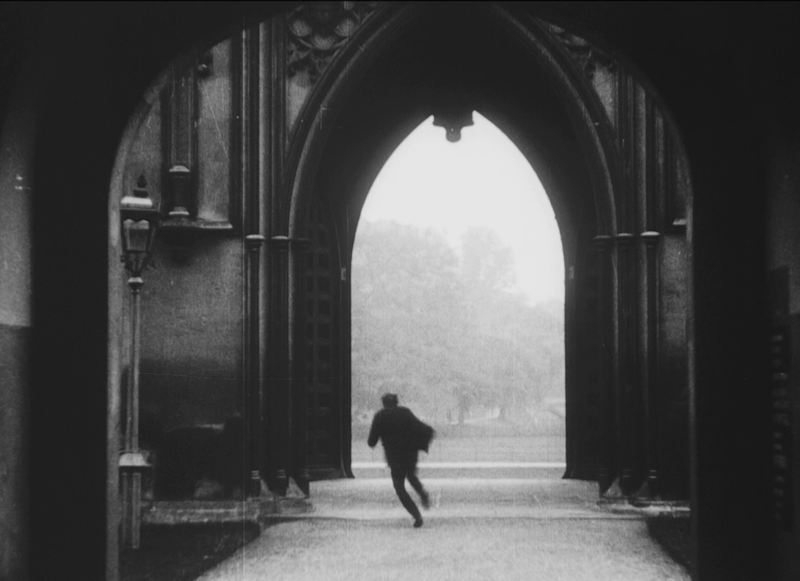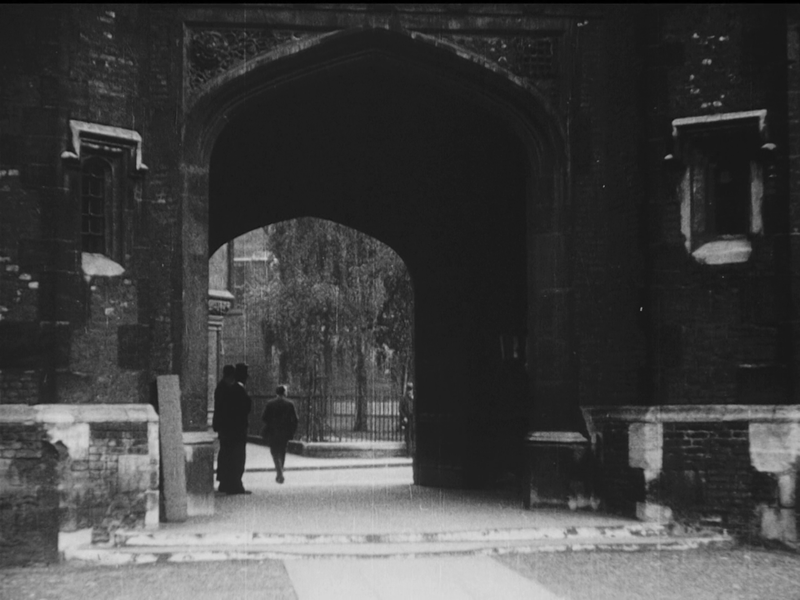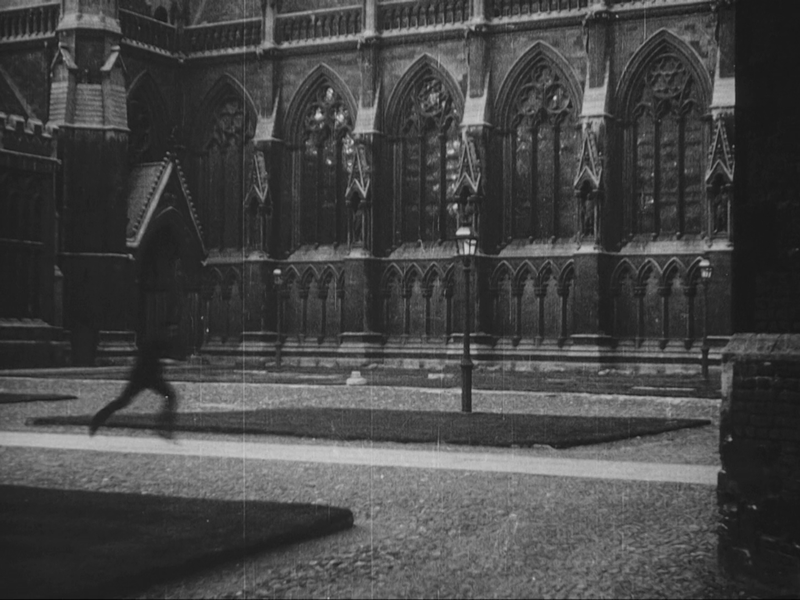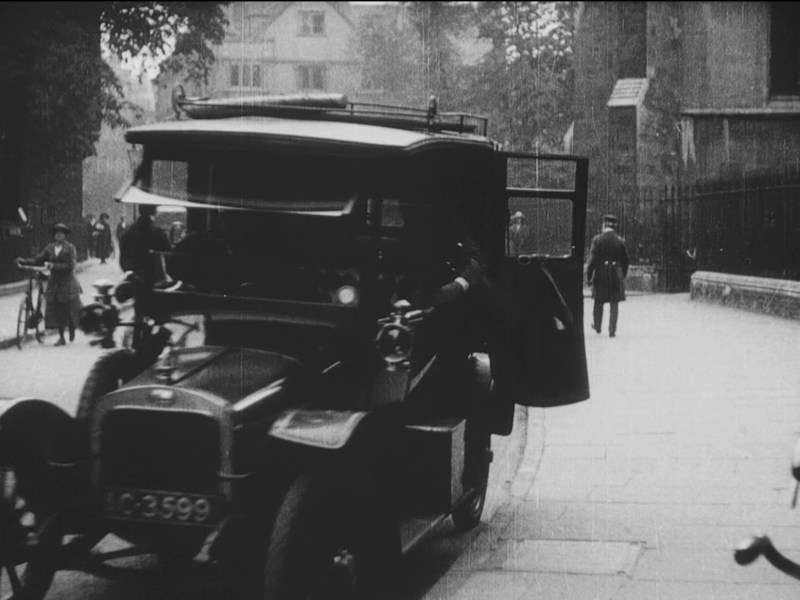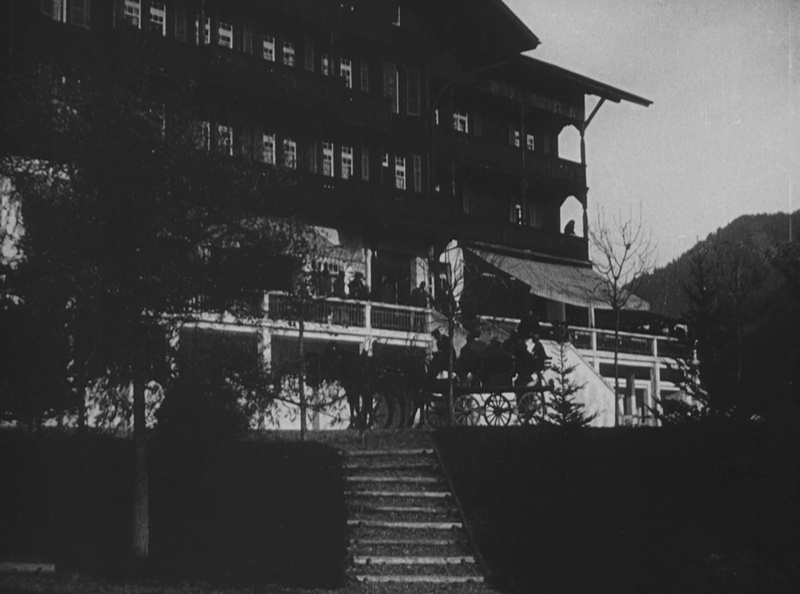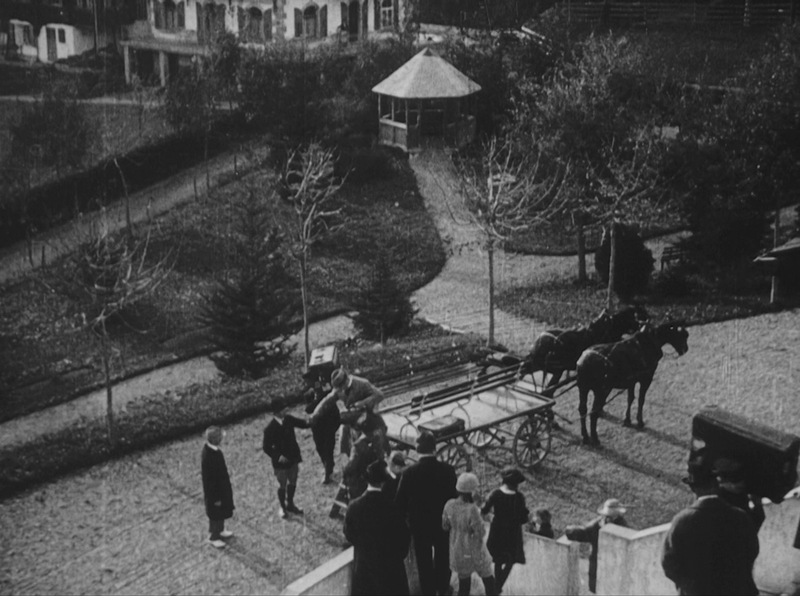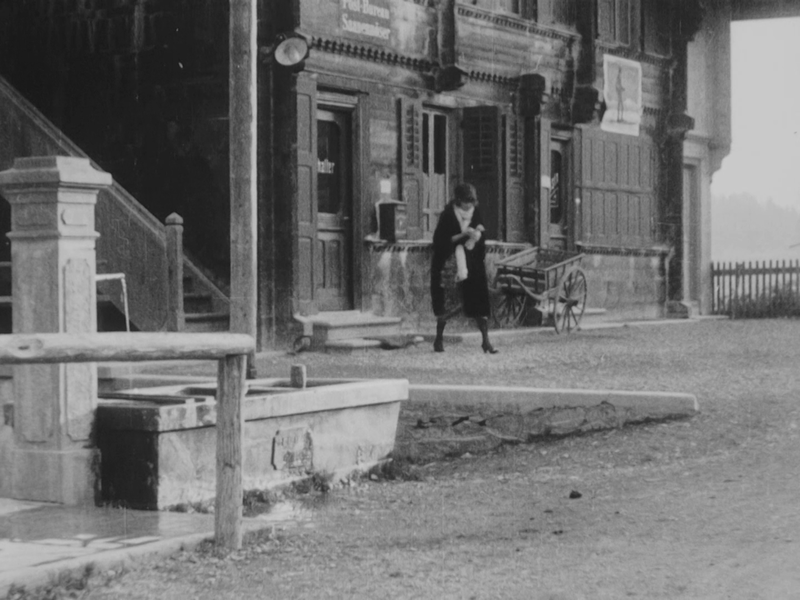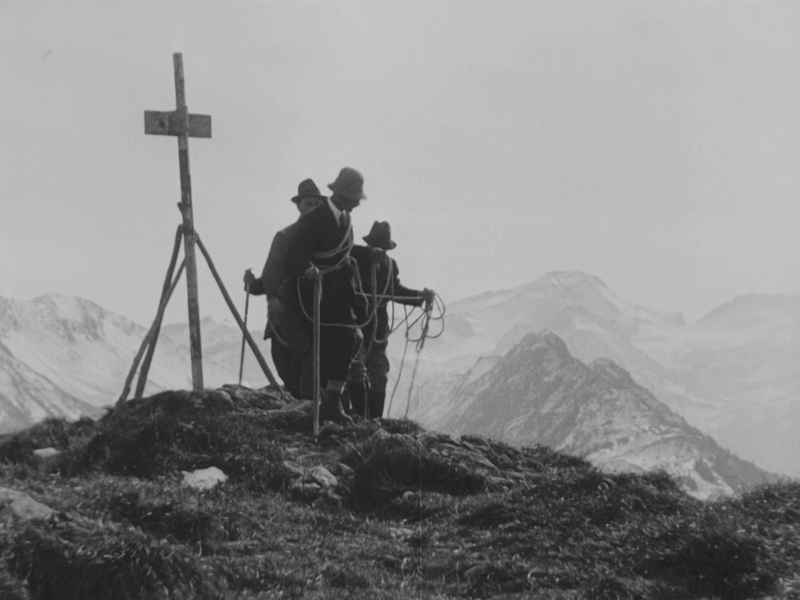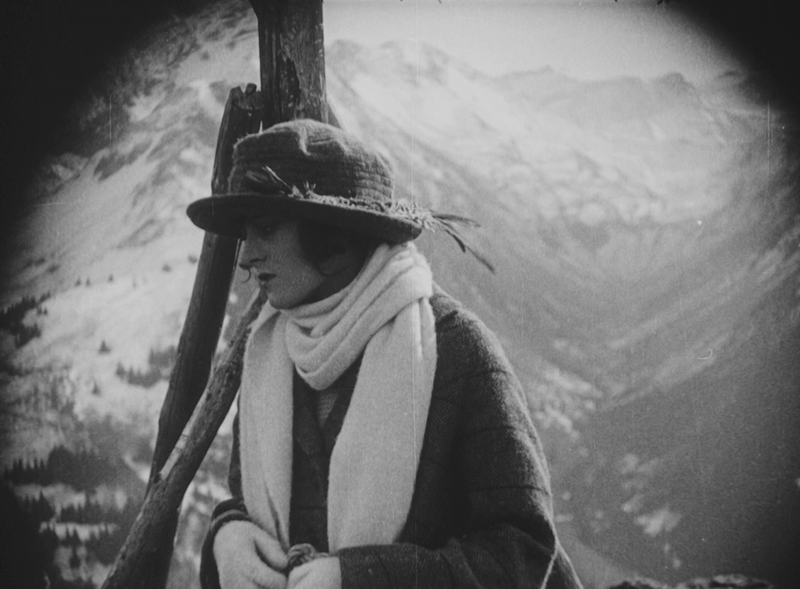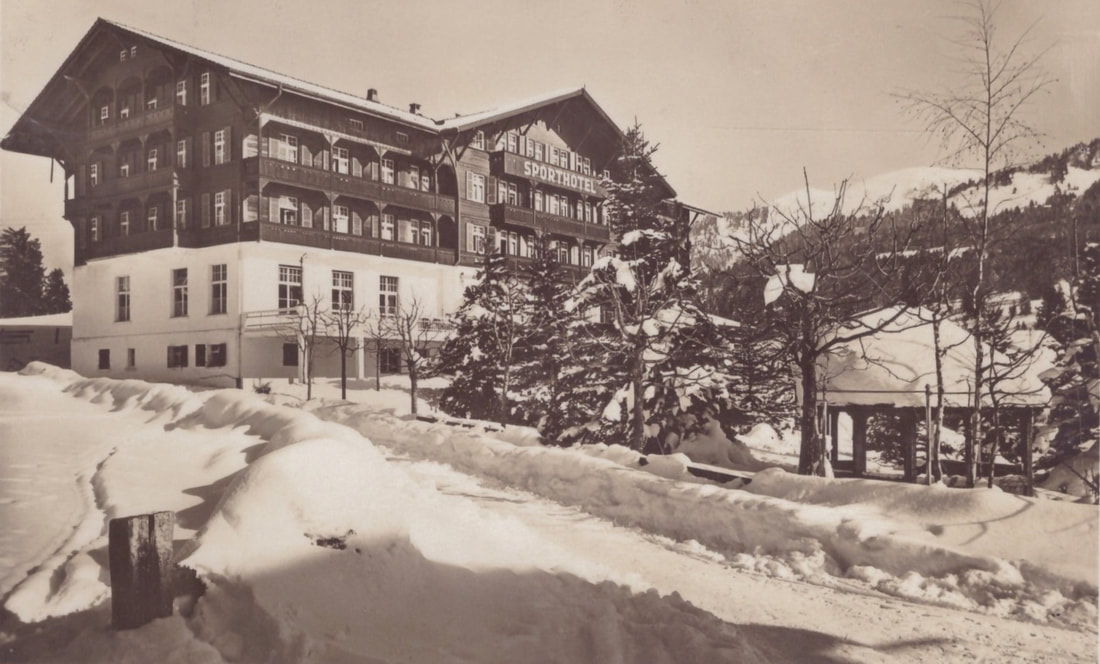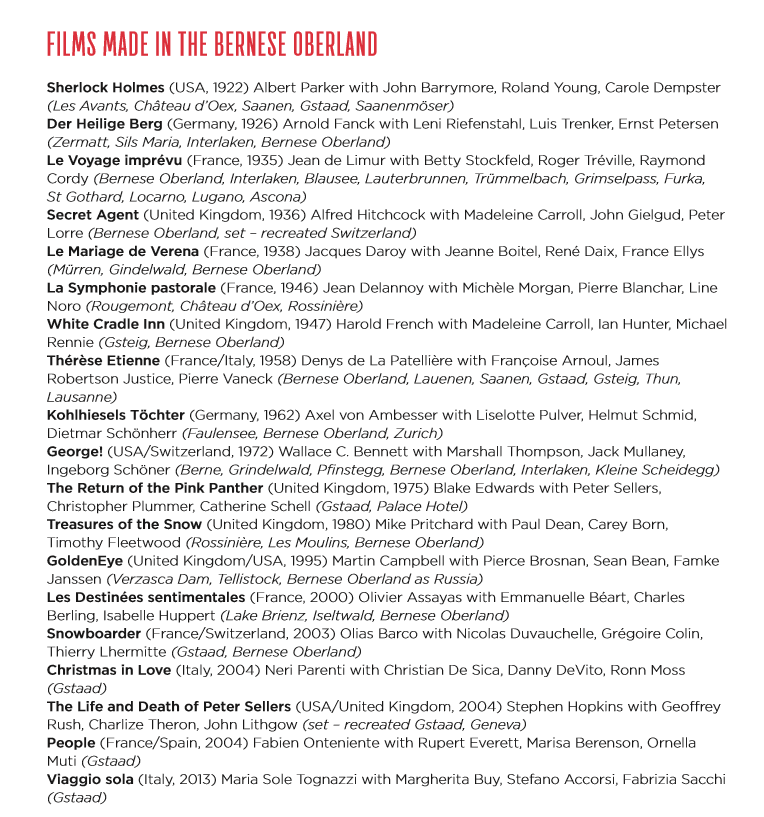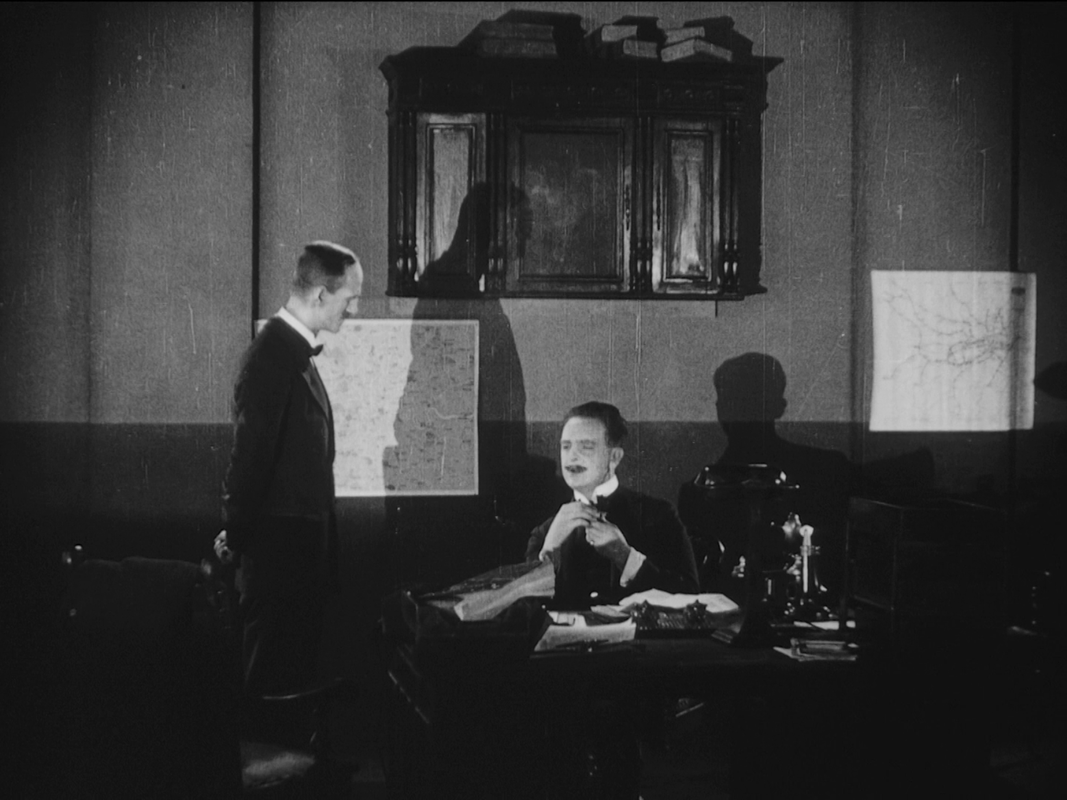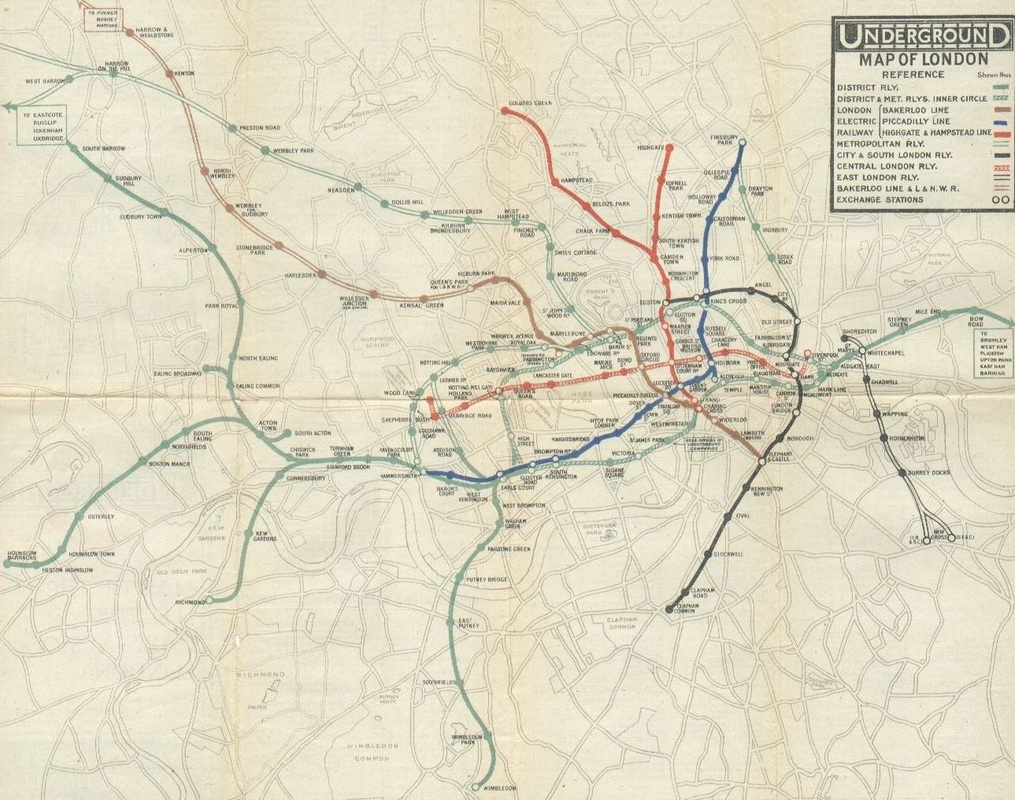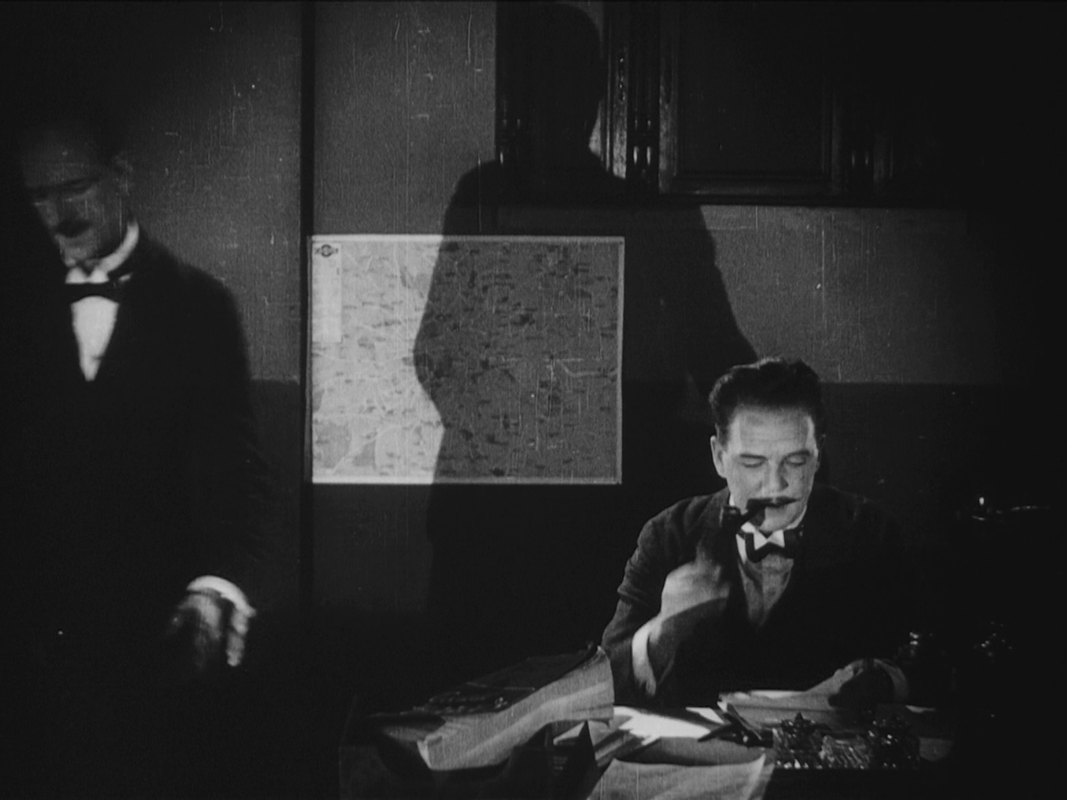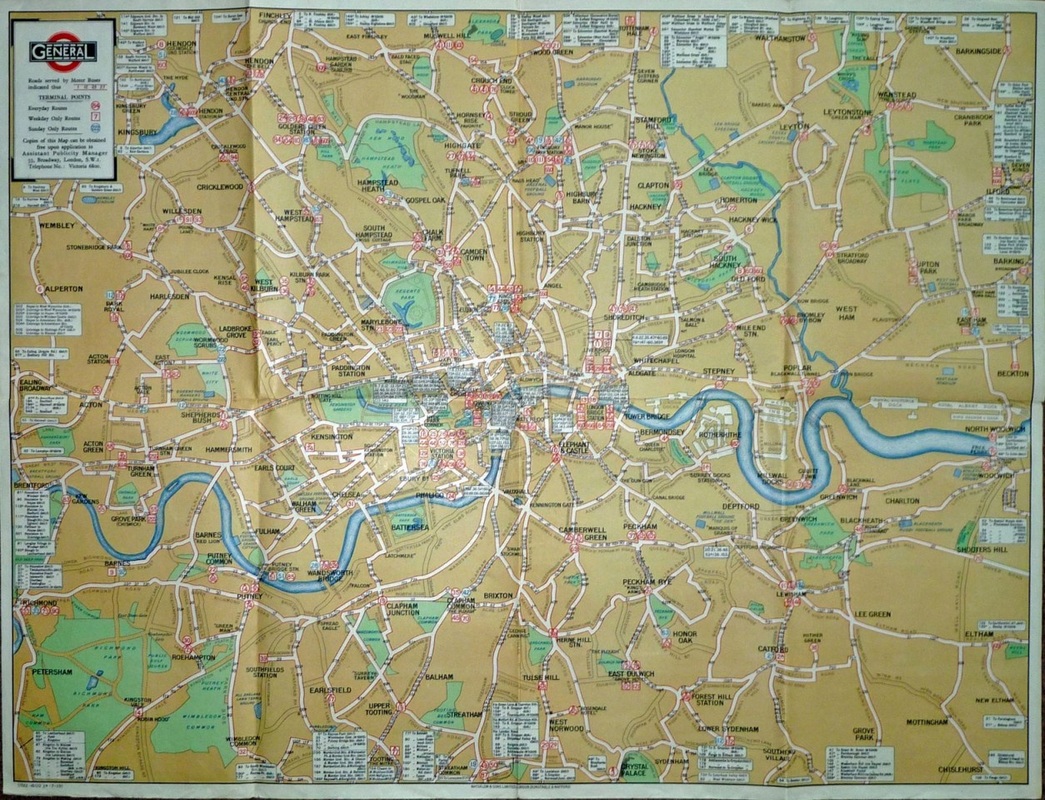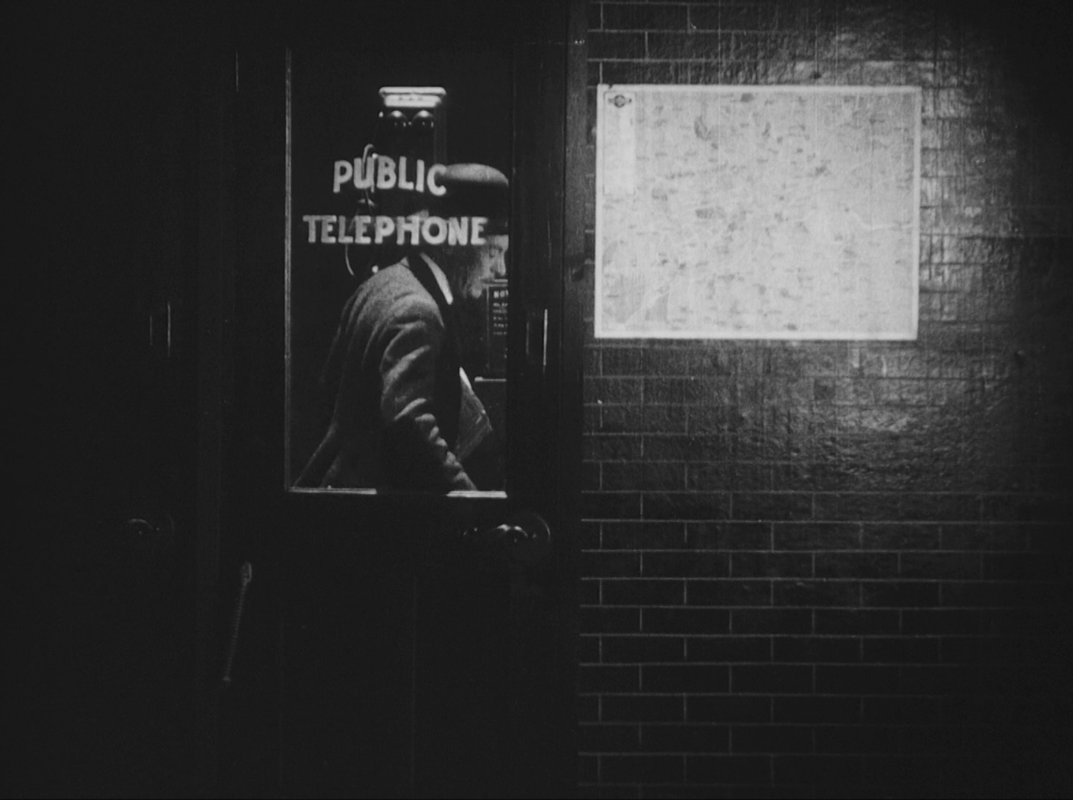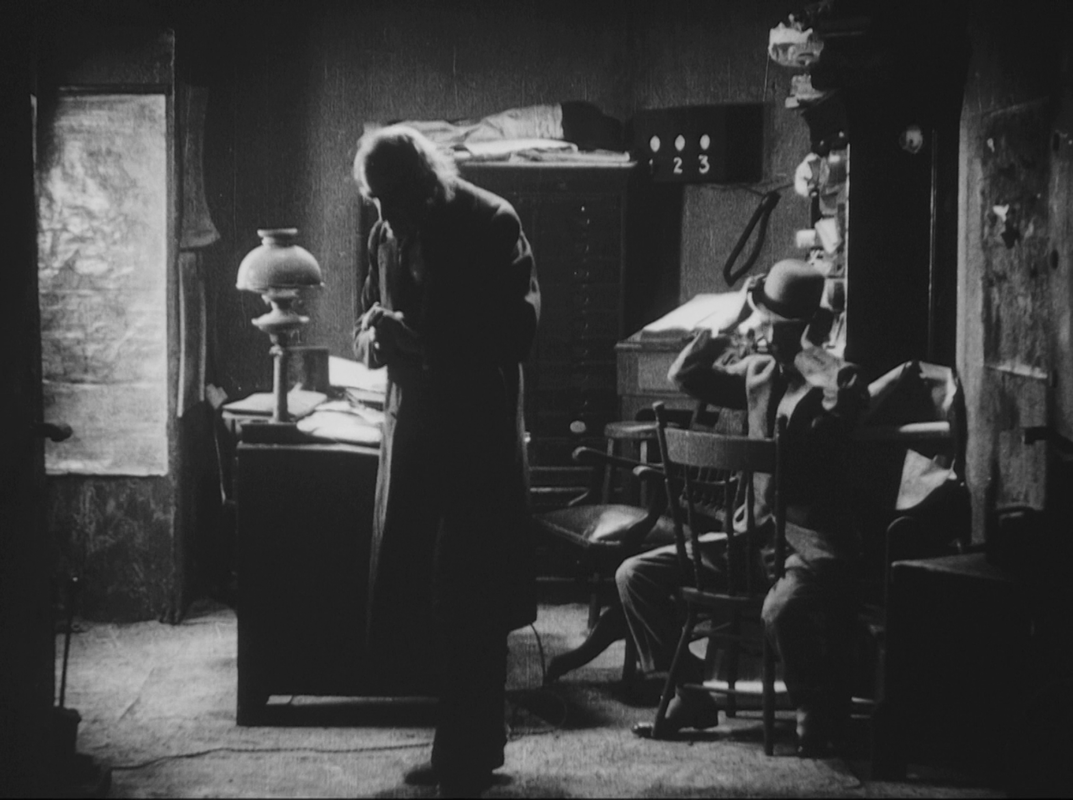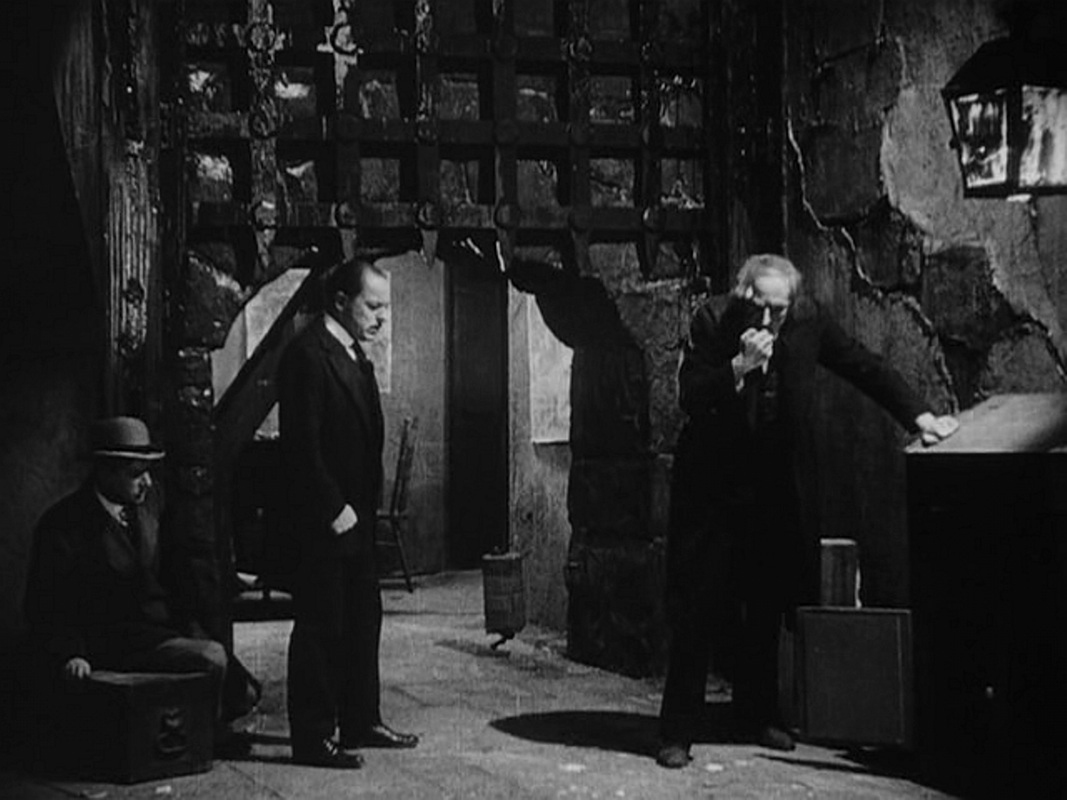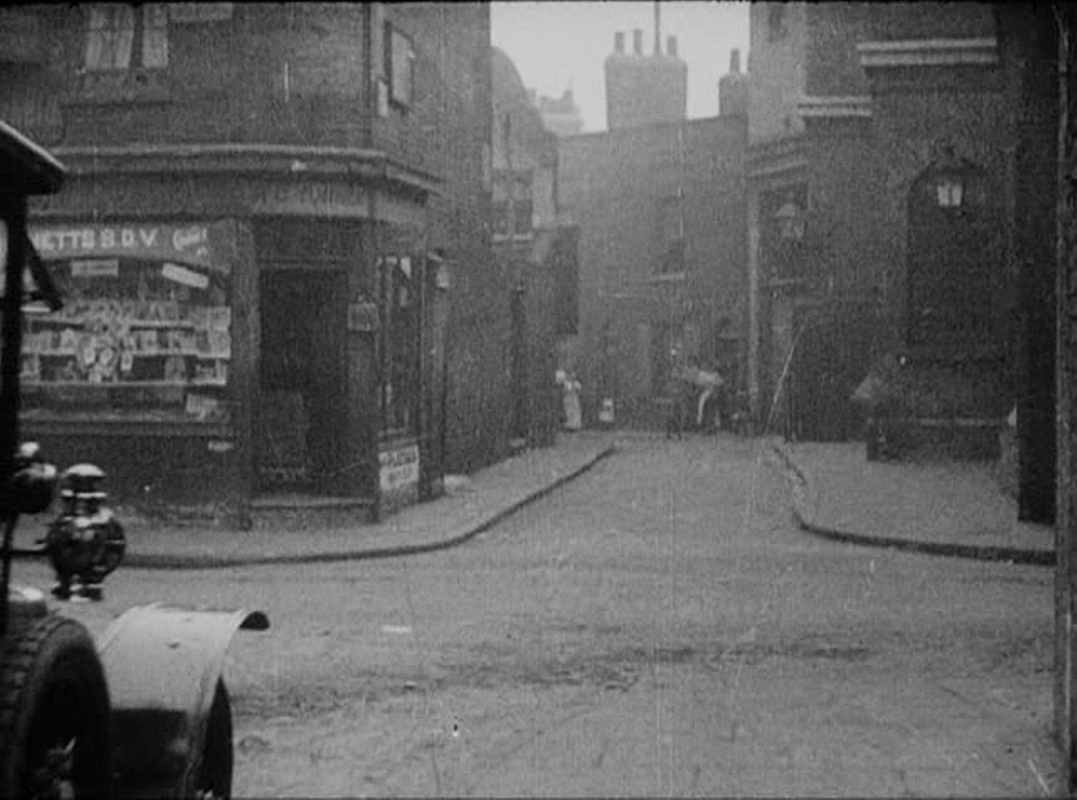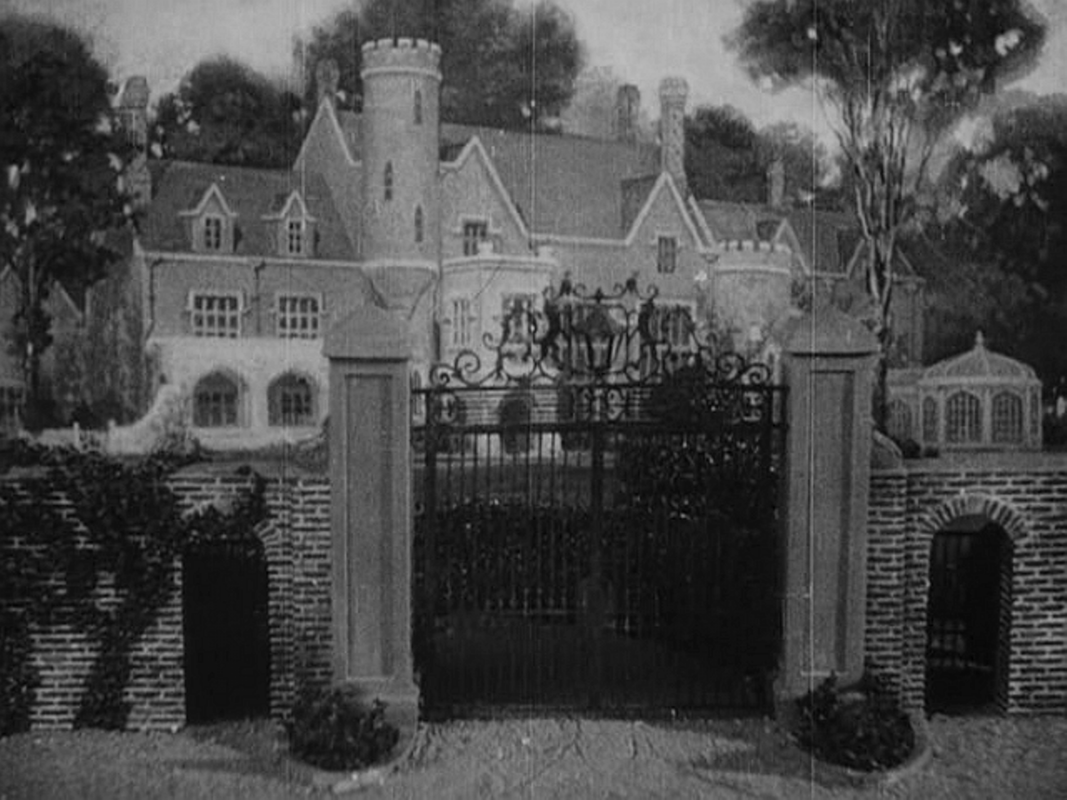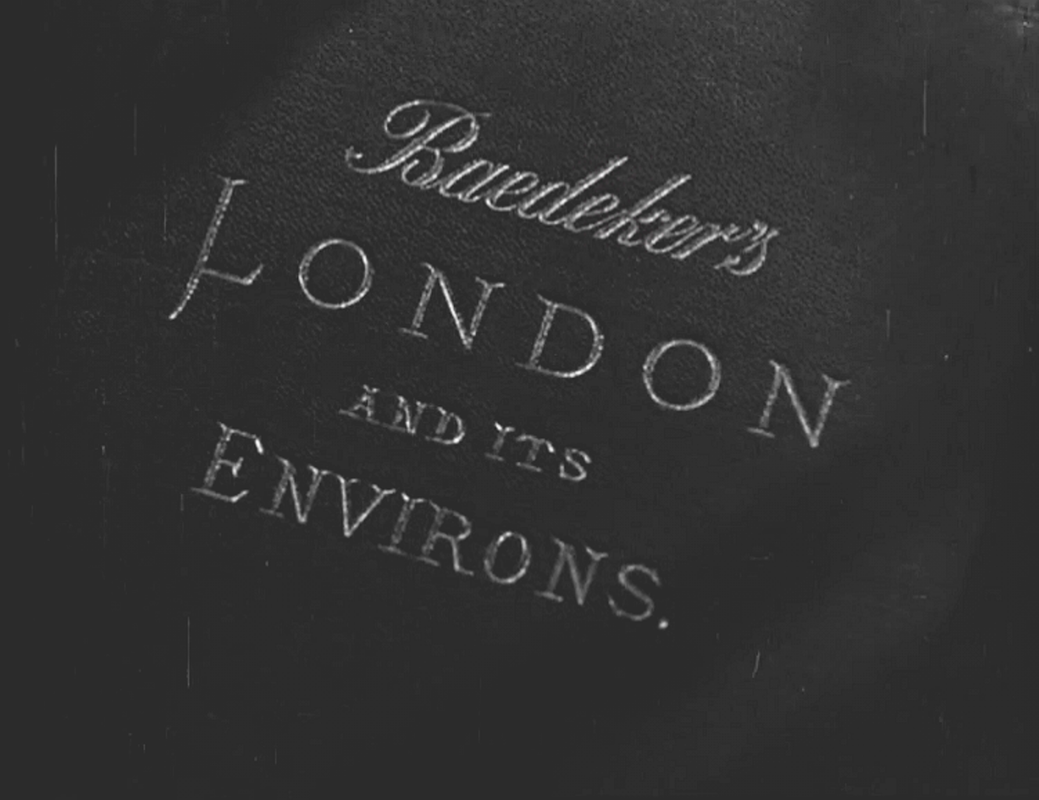an American Sherlock in London
Reading the legend on the lobby card above, we might think that this 1922 American film had a poor grasp of London topography, since John Barrymore is not on London Bridge; he is not even on a bridge - this is the Thames Embankment near Lambeth Pier. We can see more of the location in this photograph of the filmmakers at work:
Actually the film has, from the outset, a strong interest in and grasp of the city's topography. A title announces that 'We will fly over London - the vast whirlpool where eddy the conflicting forces of good and evil', and is followed by a map-like aerial view that begins at the junction of Cockspur Street and Pall Mall and finishes over Trafalgar Square, looking towards the junction of the Strand, Northumberland Avenue and Whitehall:
Coming down to earth, the next shot shows New Scotland Yard, representing the forces of good:
Limehouse
The following title introduces 'A little forgotten thoroughfare in Limehouse - the most mysterious quarter in all London'. This is where the forces of evil reside:
As we can see from the map below, thirty or so streets in the Limehouse area are crossed by railway lines:
Happily, Paul Plowman at British Film Locations narrowed down the possibilities and identified this location as Brenton Street, E.14, looking south. (Many thanks Paul.)
There are two other Limehouse streets represented in Sherlock Holmes. The first might be identified if we can trace the location of the tobacconist's to the left, with what looks like the name R.C. Turner above the door:
The second is a studio construction, probably made somewhere back in New York:
A later episode is set nearby, at a gas works in Stepney, but is played out entirely in interiors.
'Baker Street'
The topographical centre of all Sherlock Holmes narratives is the detective's home, at 221 Baker Street. Moriarty knows this, pinpointing the house on a map as he plans the destruction of its occupant:
The film itself could not be so accurate. In an interview for the Strand Magazine, John Barrymore discusses the choice of location used for the detective's home:
Here is what we see of Torrington Square in the film:
Only six of the houses in this terrace survive. The rest went with the development of the area and the building of Senate House in the 1930s. Also gone is a street that ran from Torrington Square south to the British Museum, called British Museum Avenue, W.C.1.
A sequence of the film was filmed at the junction with Montague Place:
Coincidentally, Sherlock Holmes had actually lived in this area, as we learn in 'The Musgrave Ritual': 'When I first came up to London I had rooms in Montague Street, just round the corner from the British Museum.'
It is curious that, having chosen to film in this area because it better suggested the Baker Street of Sherlock Holmes's time, the filmmakers seem not to have minded showing the Mark 1 tank positioned in front of the North entrance to the British Museum:
Here is that 'grim reminder of the Great War' in 1924:
Kensington
The dénouement is at Dr Watson's house, address unspecified:
The location is Pembroke Gardens, W.8, and Dr Watson's house is, I think, no. 27. The plot involves Moriarty's henchmen being stationed across the street, ready to shoot Holmes should he arrive at Watson's house. The house in which they lurk is shown once, in a tilt upwards, and we can see that it does not correspond to any house on the other side of Pembroke Gardens. Here is a composite view made by Christopher Matheson for the Britmovie film location forum:
Laborious investigations lead me to conjecture that this is a now-demolished house on Harrington Gardens, S.W.7, though I haven't yet found any photographic proof of the claim. If I do I shall update this page.
Even if shot and counter-shot turn out to be more than a mile apart, this and the Pembroke Garden location both fit Watson's statement in 'The Red-Headed League' that his house was in Kensington.
There are brief glimpses of other parts of London in the film. A taxi ride through London shows firstly Piccadilly Circus and then Monmouth Street, heading from Seven Dials:
Later, there is a view of Trafalgar Square and Saint Martin in the Fields, and a view of another taxi ride on a central London street I have still to identify:
Beyond London, a sequence set in a house near Hampton Court is announced by a view of Holmes in front of the gates to the Palace:
The house to which he then goes is given a fictional name:
The house itself doesn't look quite real to me, but if you recognise it please do let me know.
The day of filming in the Hampton Court area is recounted at the end of the interview with Barrymore in the Strand Magazine, already quoted. A sequence on a houseboat near the Karsino on Tagg's Island is described and illustrated. The interviewer also quotes Albert Parker's justification of this apocryphal scene:
Houseboats of this type, moored opposite the Karsino, appear in an episode of Wonderful London:
However, no such houseboat appears in the film Sherlock Holmes. Nothing of the elaborate sequence described by the interviewer, in which he himself had a role as an extra, survives in the Brownlow-restored version we now have. Probably that sequence was part of the twenty-five minutes' worth of footage still missing, alongside the sequence showing Holmes on the Thames Embankment. That too is missing from the extant version, surviving only in the images with which I began this post and in contemporary magazine illustrations:
Other location work for the film was done at Cambridge (St John's College):
And there are scenes shot in Switzerland:
|
Tobias Lutz kindly pointed out to me that the Backdrop Switzerland Expo in Gstaad listed several locations for this film (right), and suggested that the hotel we see was in Saanenmöser. The post office we see in the film is there, certainly, and the hotel looks very much like this one, the Saanenmöser Sport Hotel:
|
(Many thanks, Tobias.)
Maps
In an office at Scotland Yard there are two maps:
The one on the right is a map of the London Underground network, very much like this one:
The one on the left is a map of London, and also appears to be a transport map:
These are sequences shot back in New York, with maps of London serving to bridge the distance between studio artifice and real place.
As well as the map on which he marks Holmes's address, Moriarty has other maps in his lair, but none is shown clearly enough to allow decipherment:
There is a map on the wall in a Cambridge student's room:
And Holmes has a globe in his Baker Street flat:
If you have any suggestions as to where either of the places below might be, please do contact me, here.
(The Strand Magazine interview with John Barrymore is discussed by Ray Wilcockson here. The full interview can be read here.)
The Barrymore-Parker film is based on the theatrical adaptation of Sherlock Holmes stories by William Gillette. See here for a discussion of the maps in the 1916 Essanay adaptation, starring Gillette, and here for the maps in Graham Cutts' 1932 adaptation of The Sign of Four.
The maps of London I have used in this post are from a 1913 Baedeker, much like the one used by Moriarty to press flowers in The Adventures of Sherlock Holmes:
